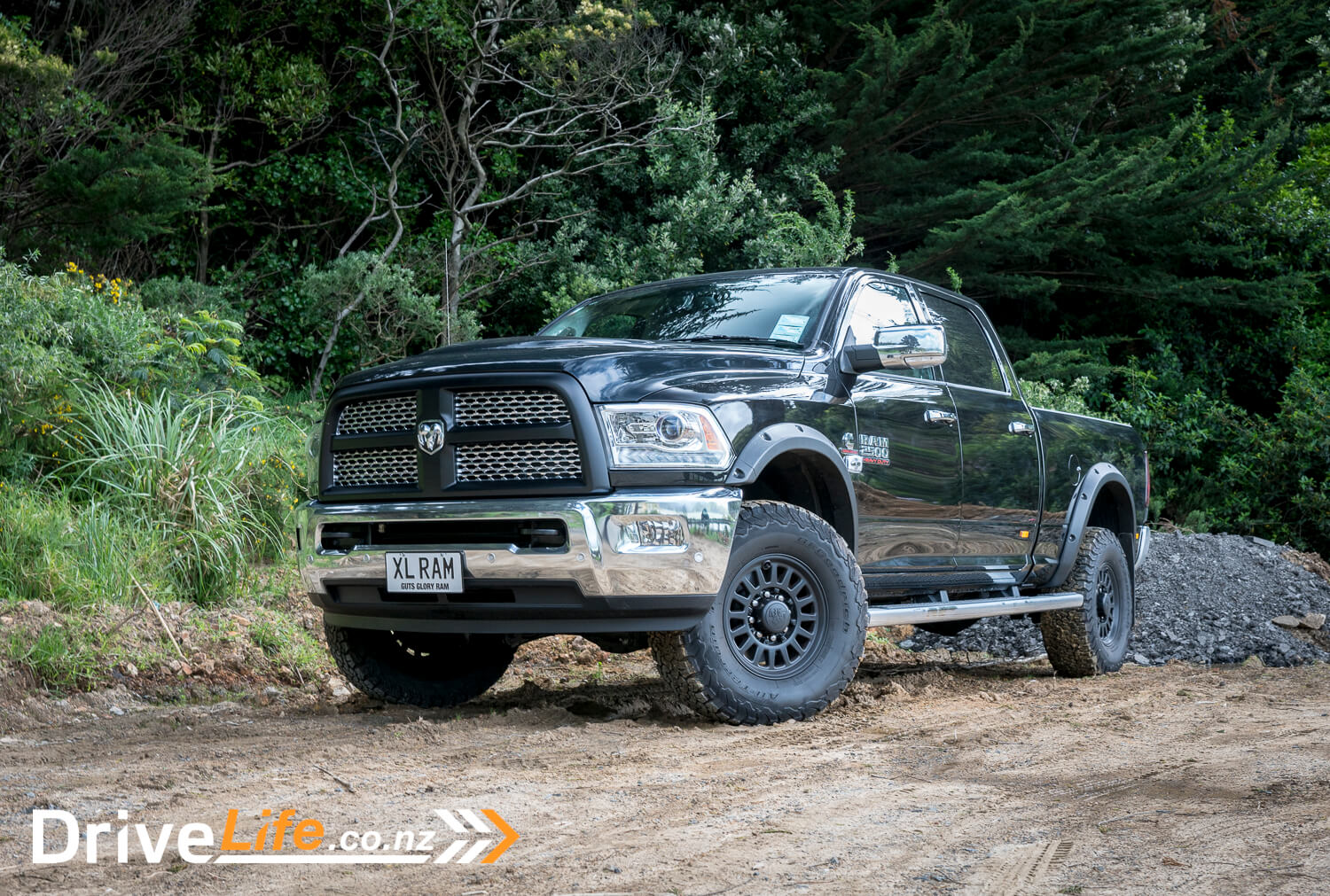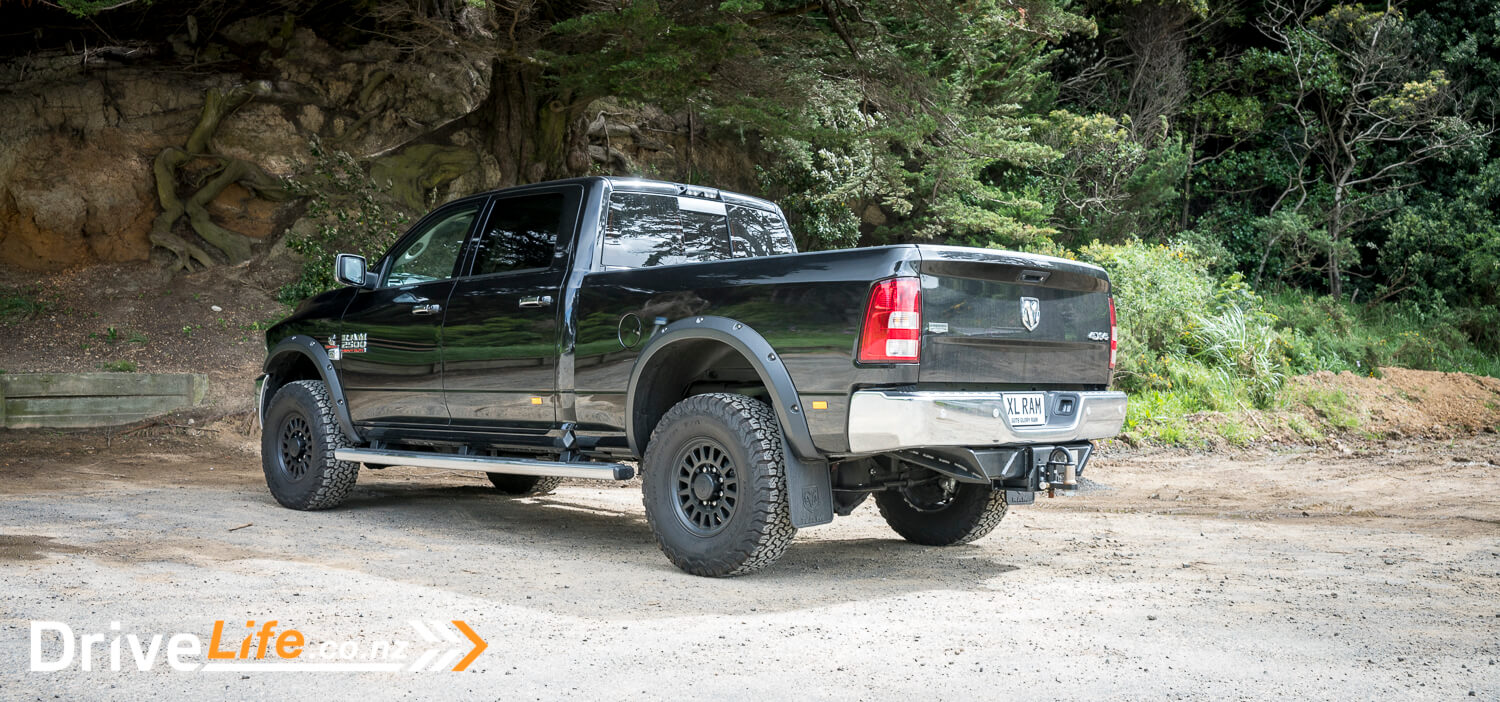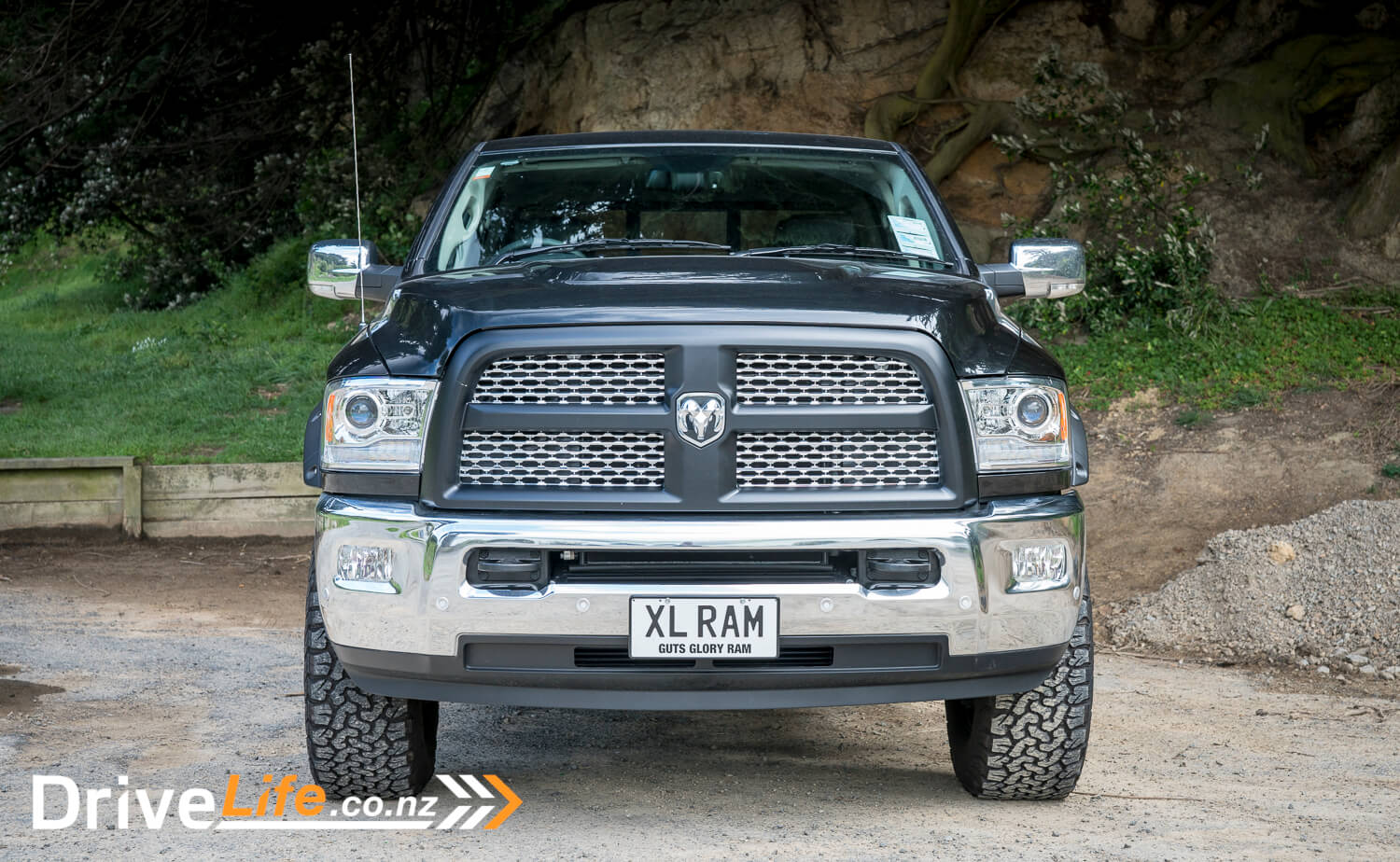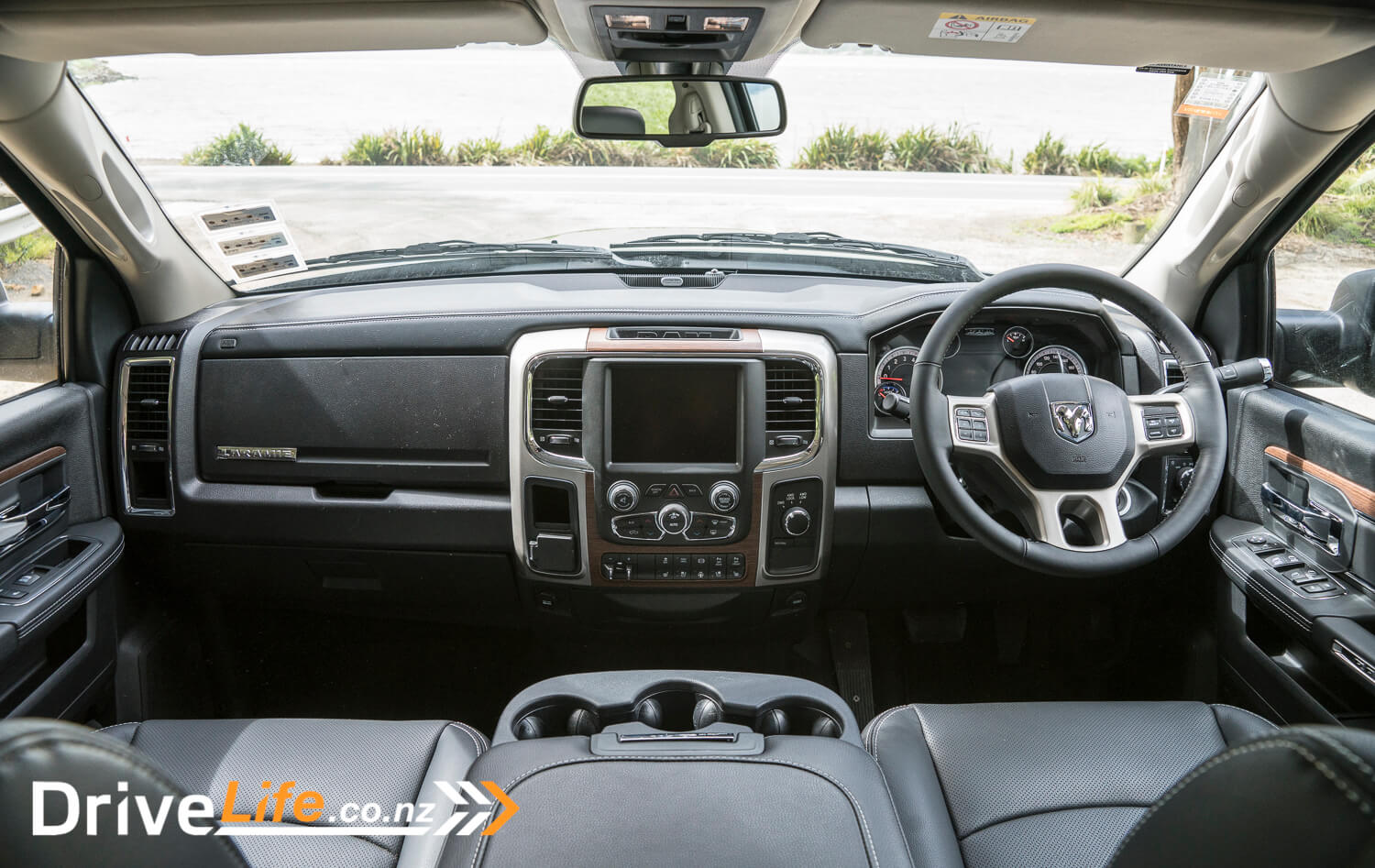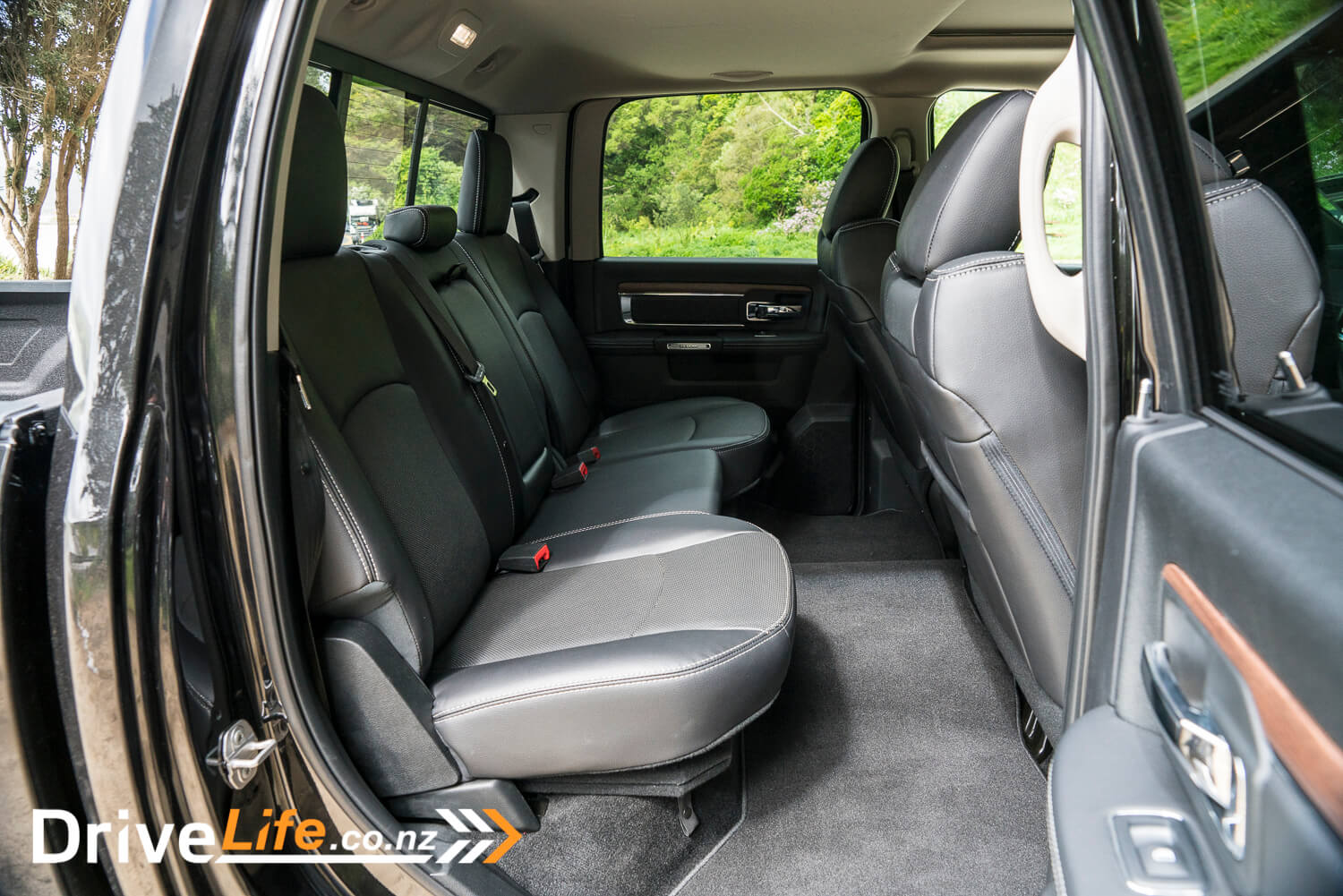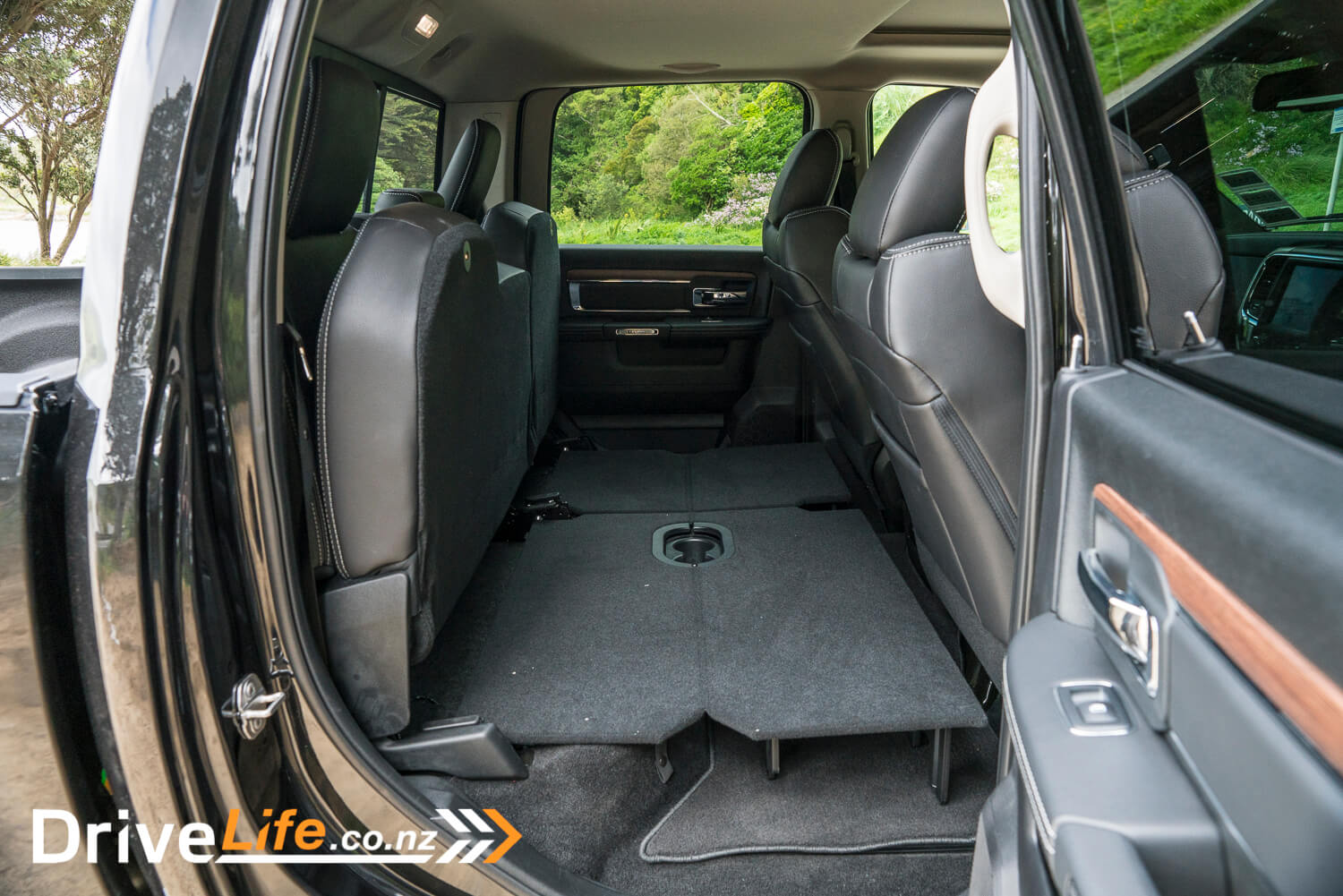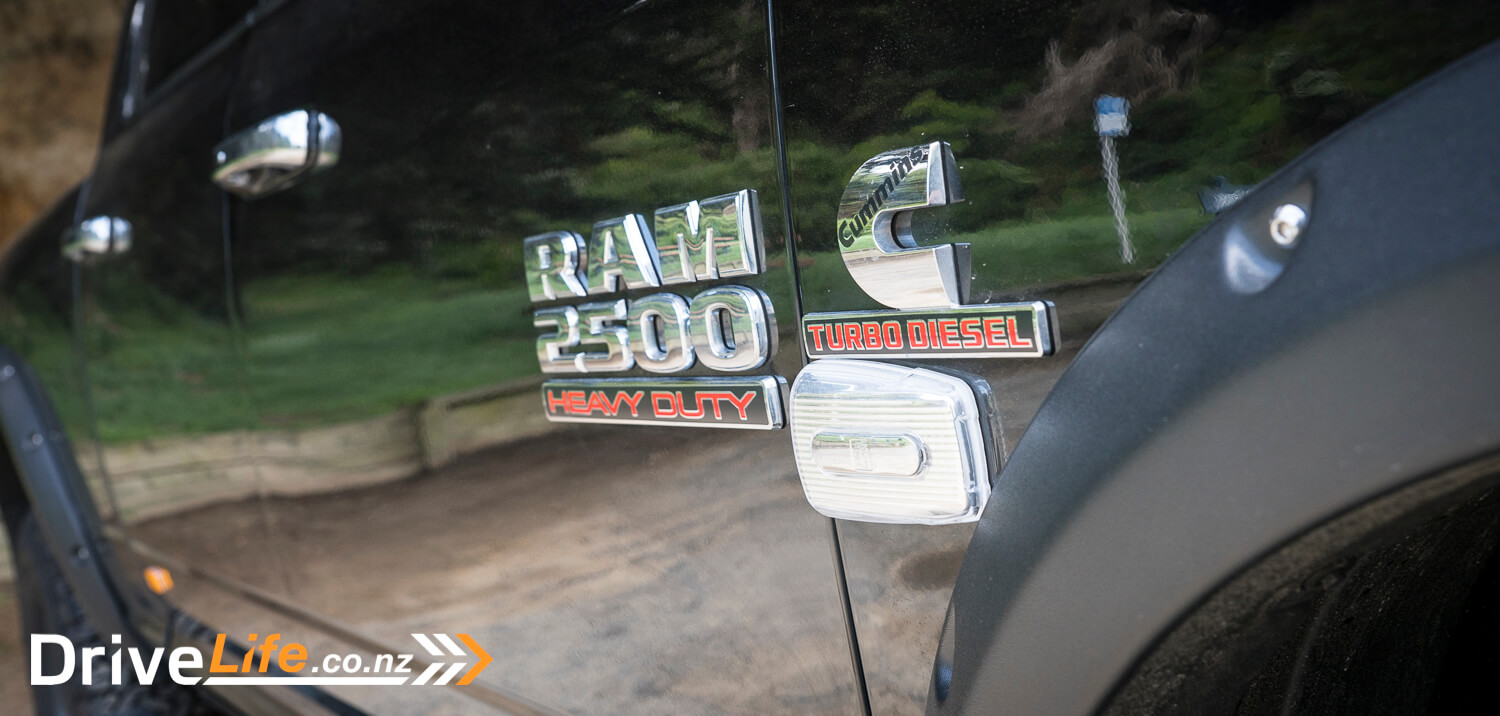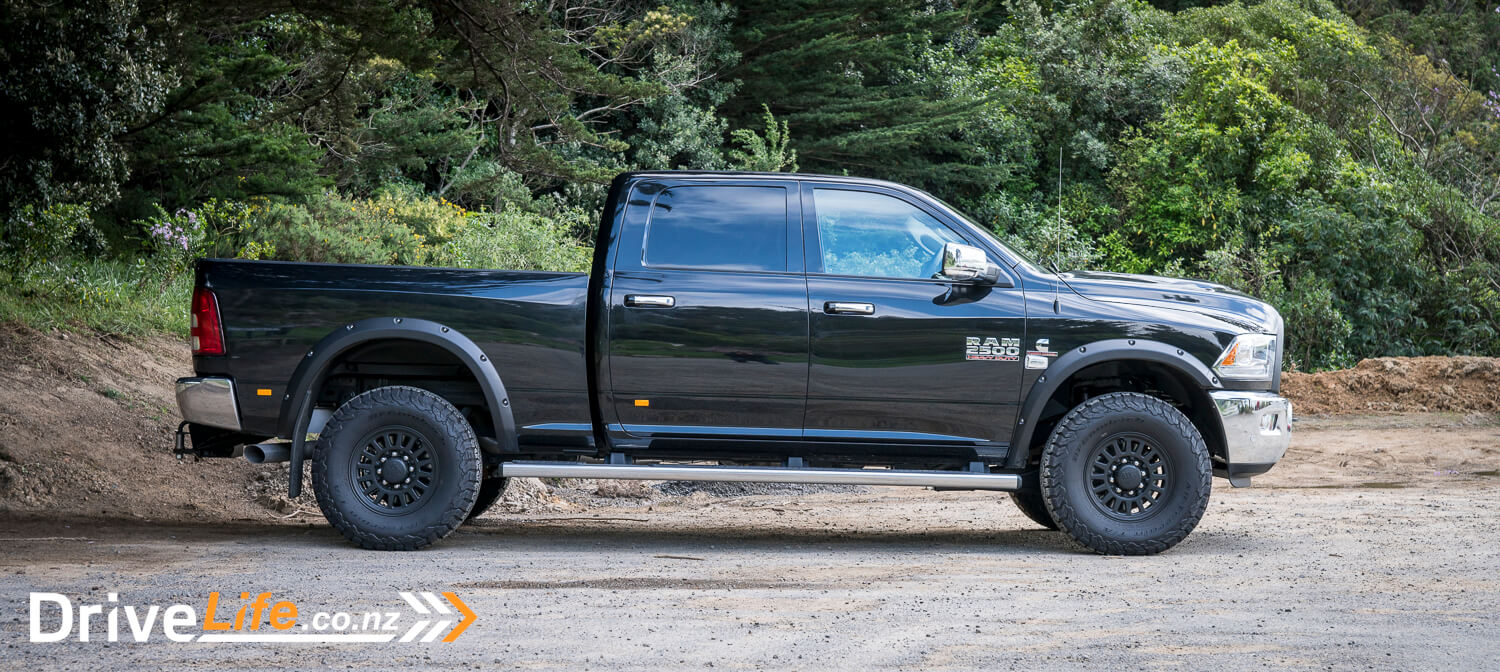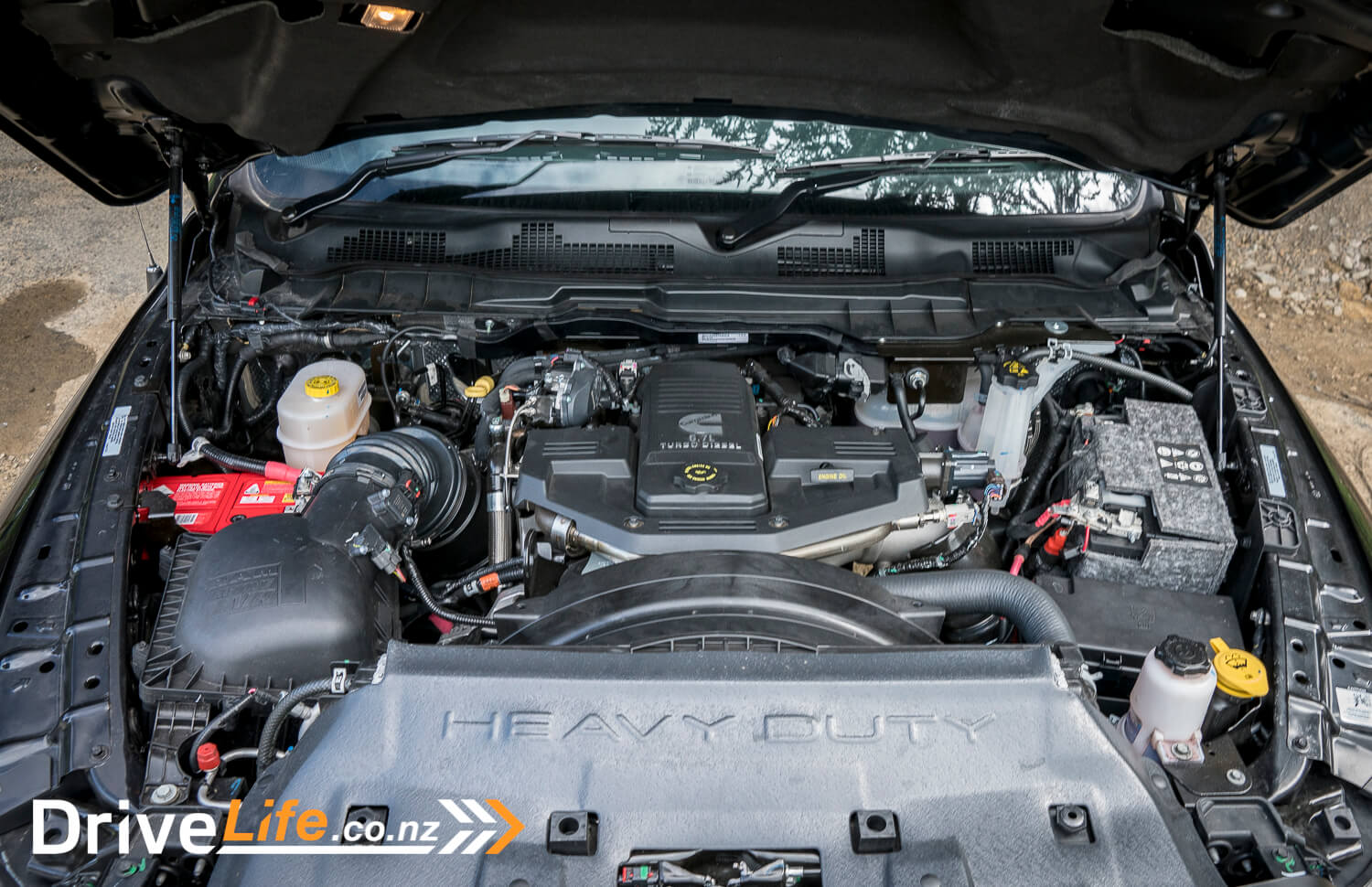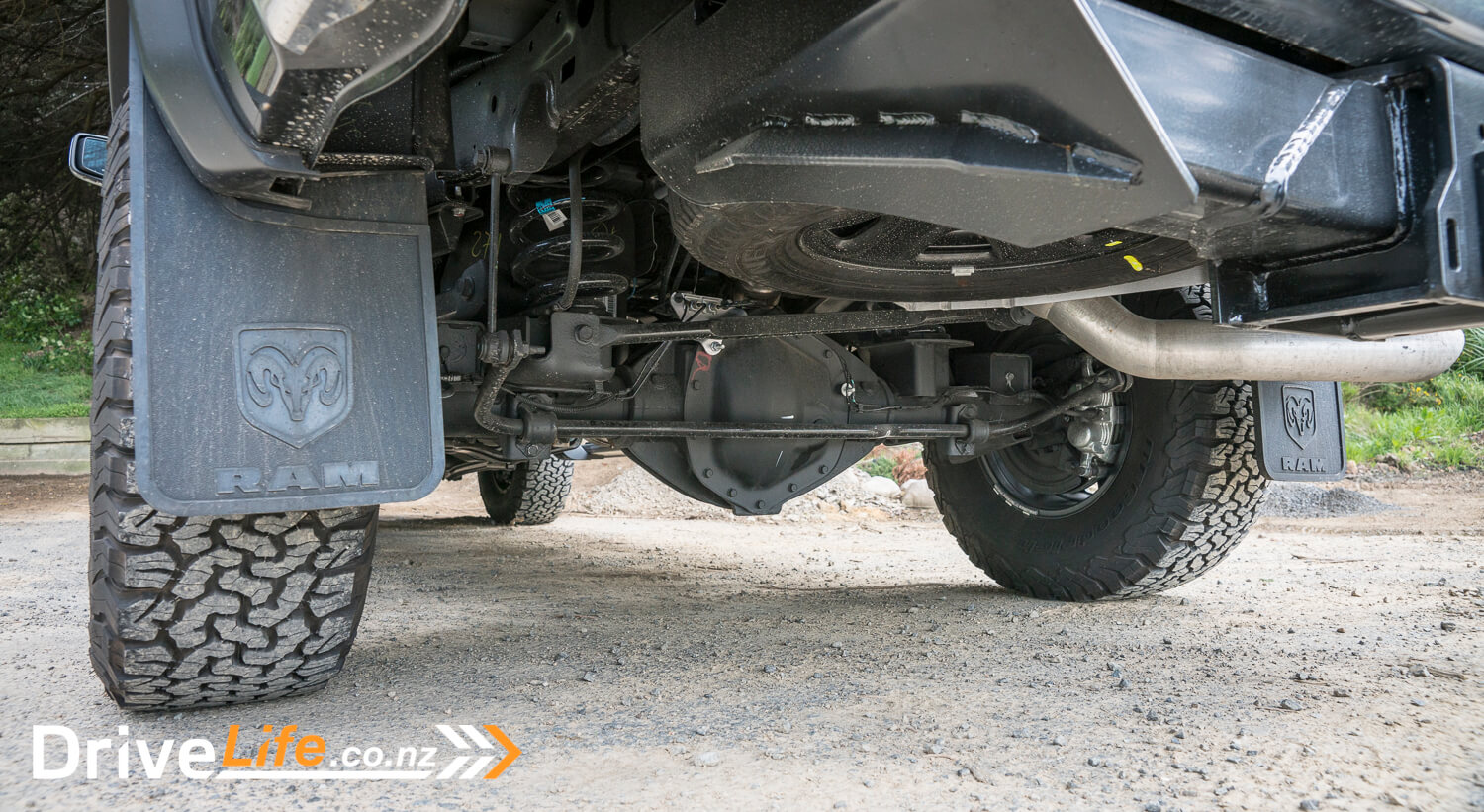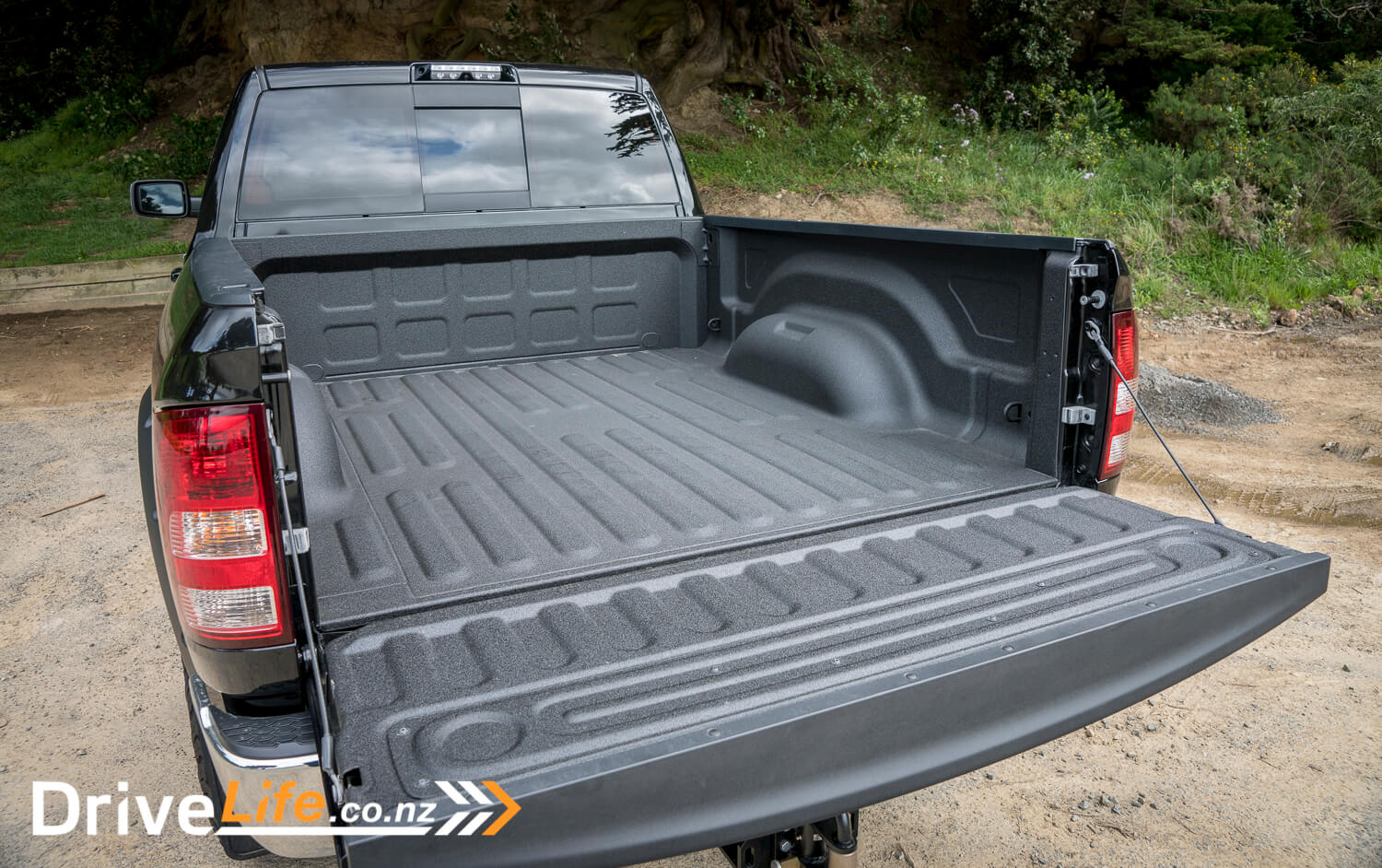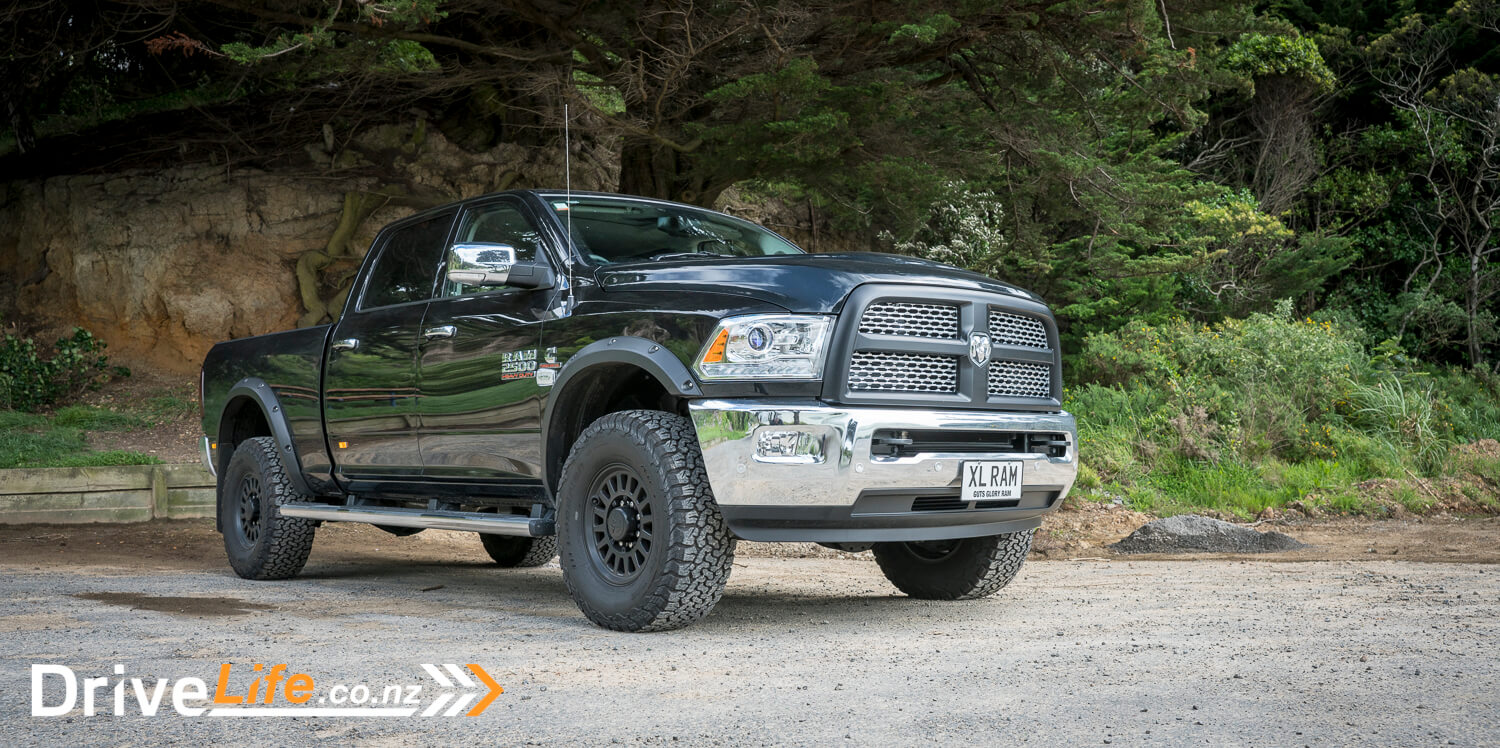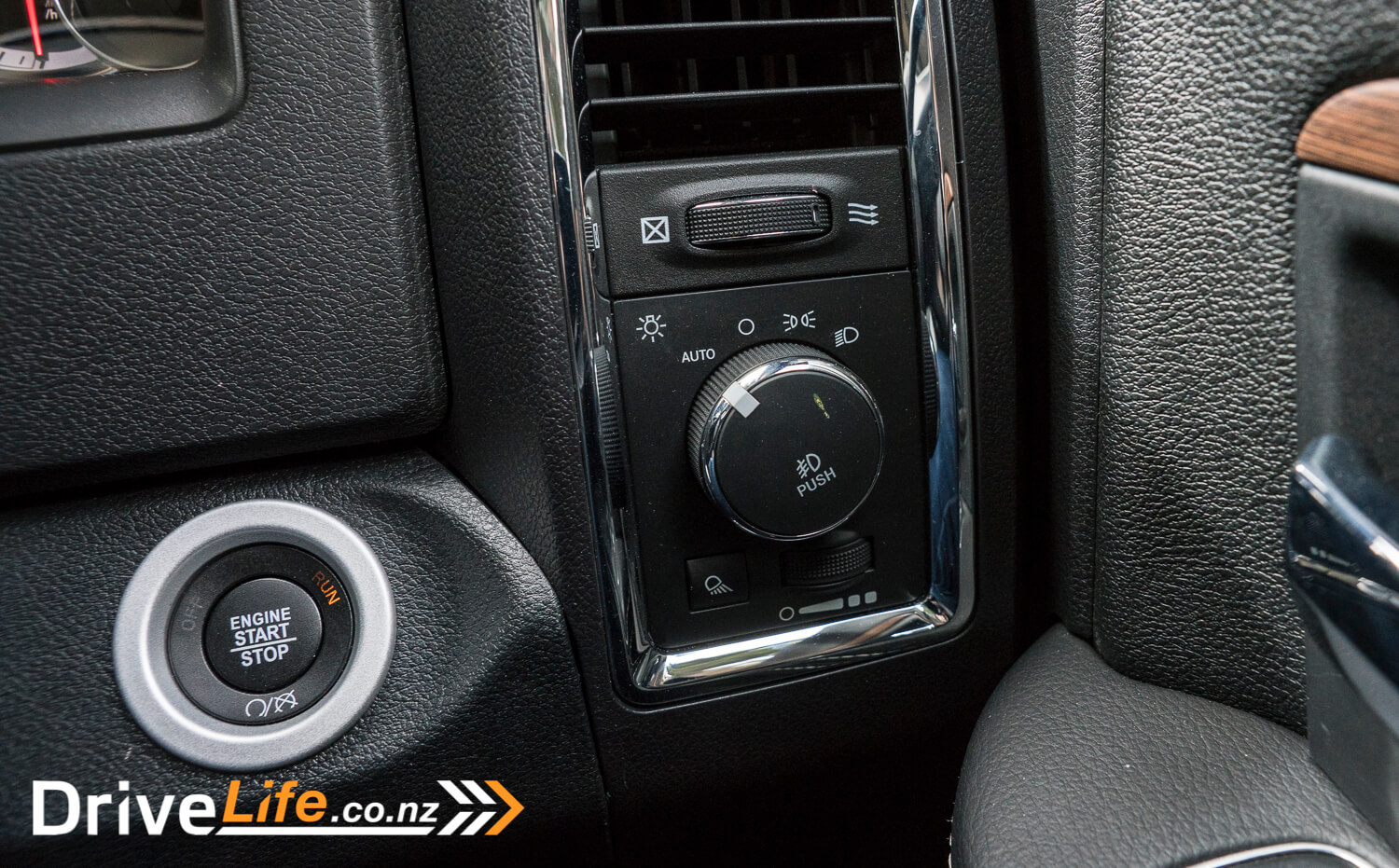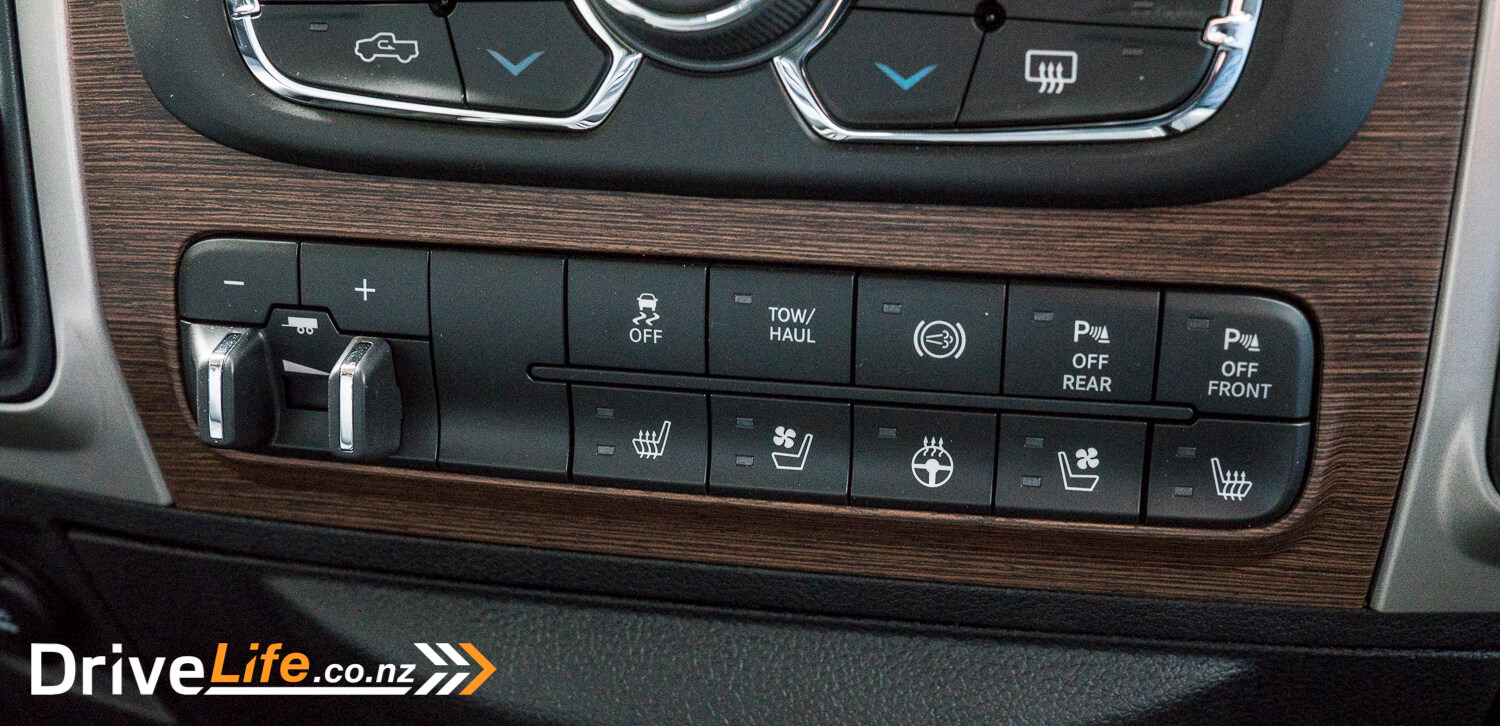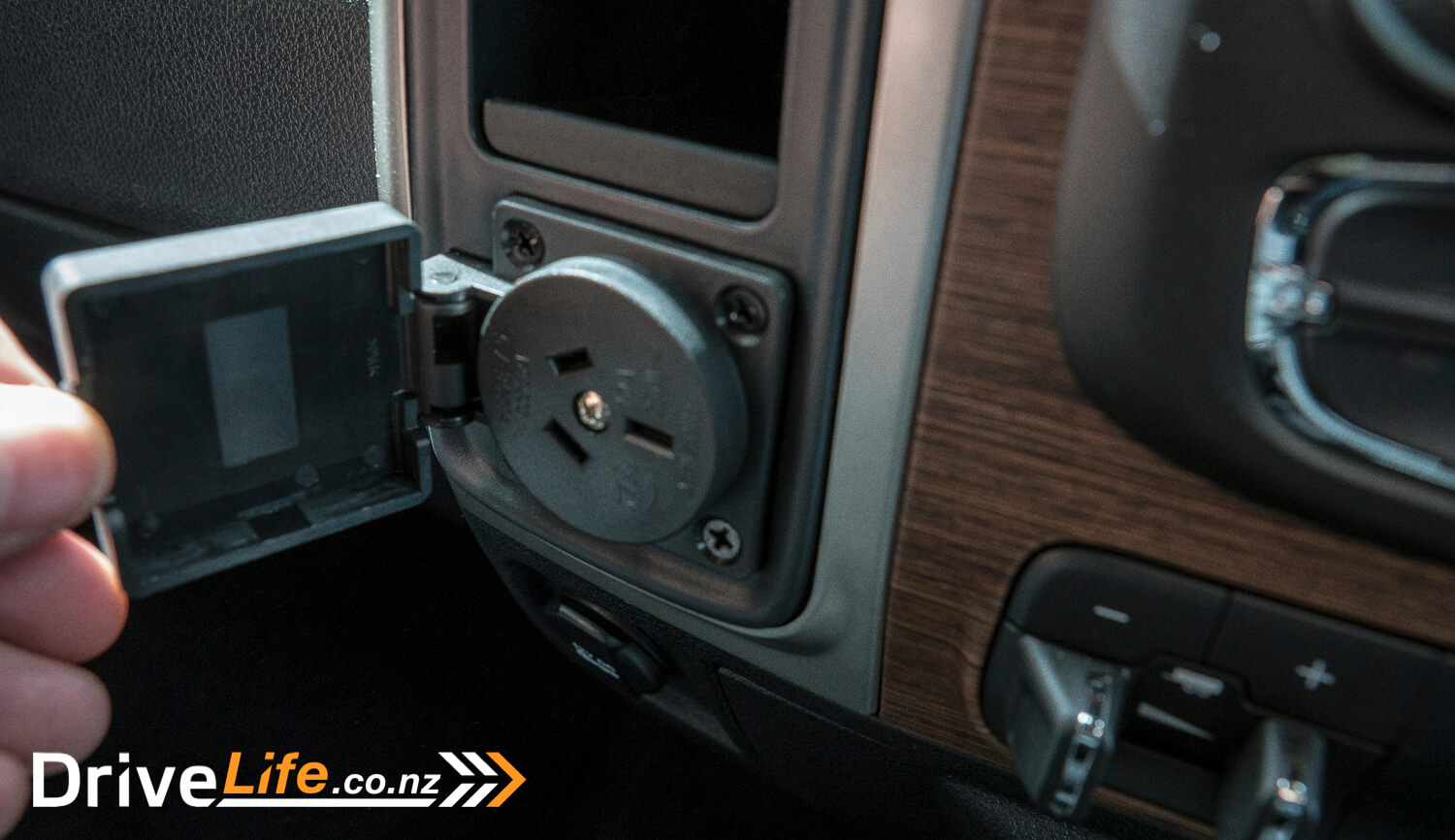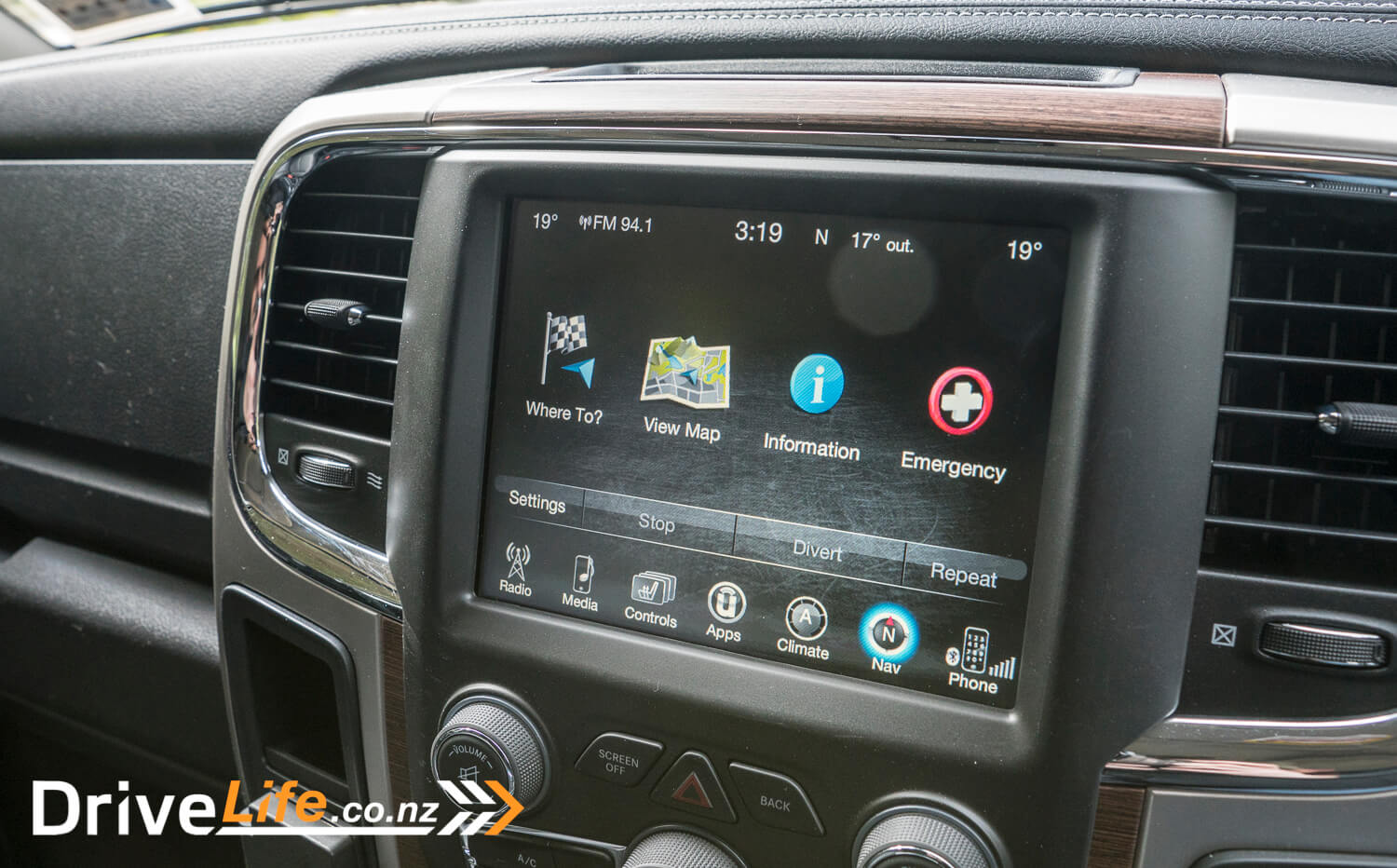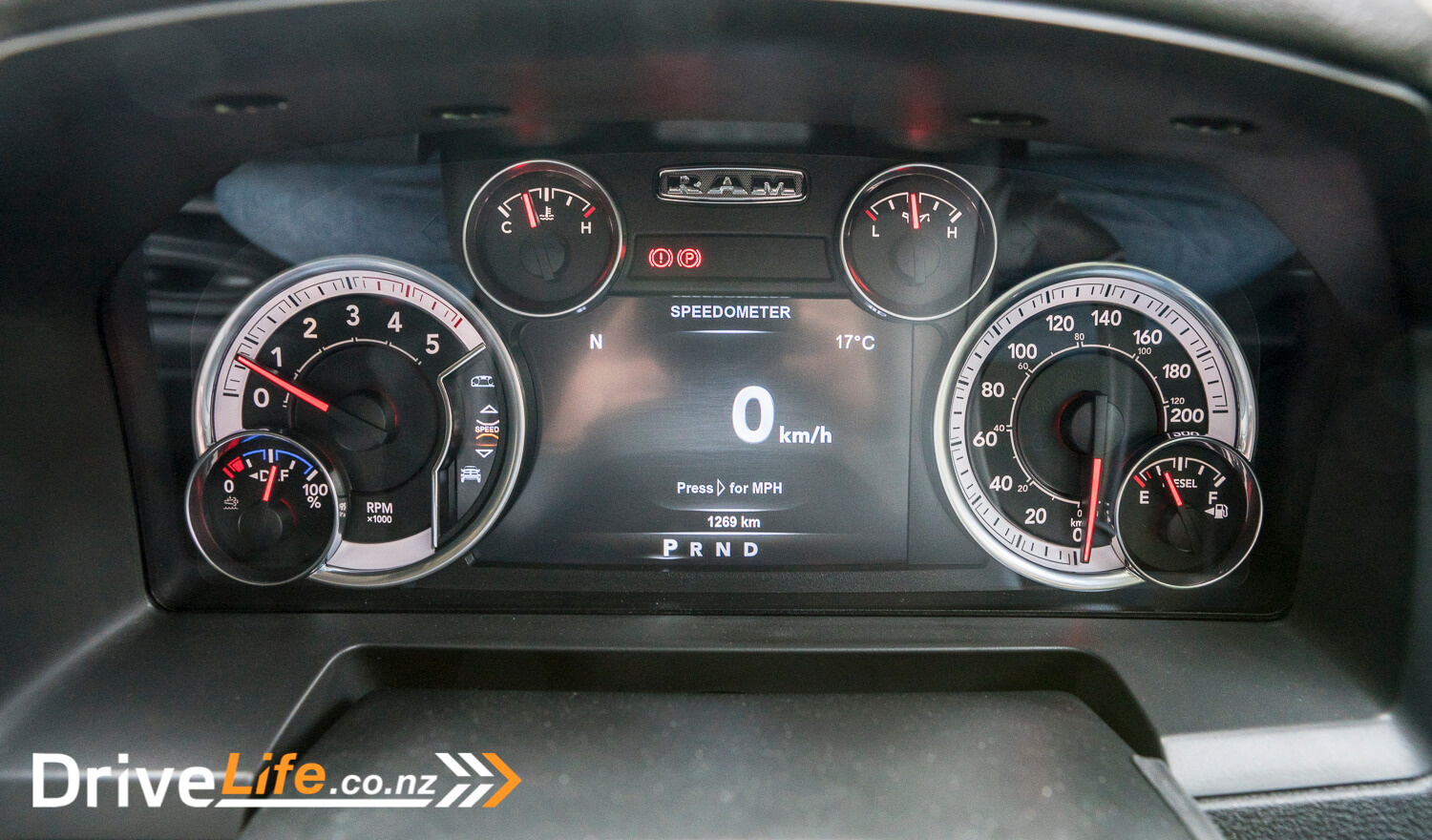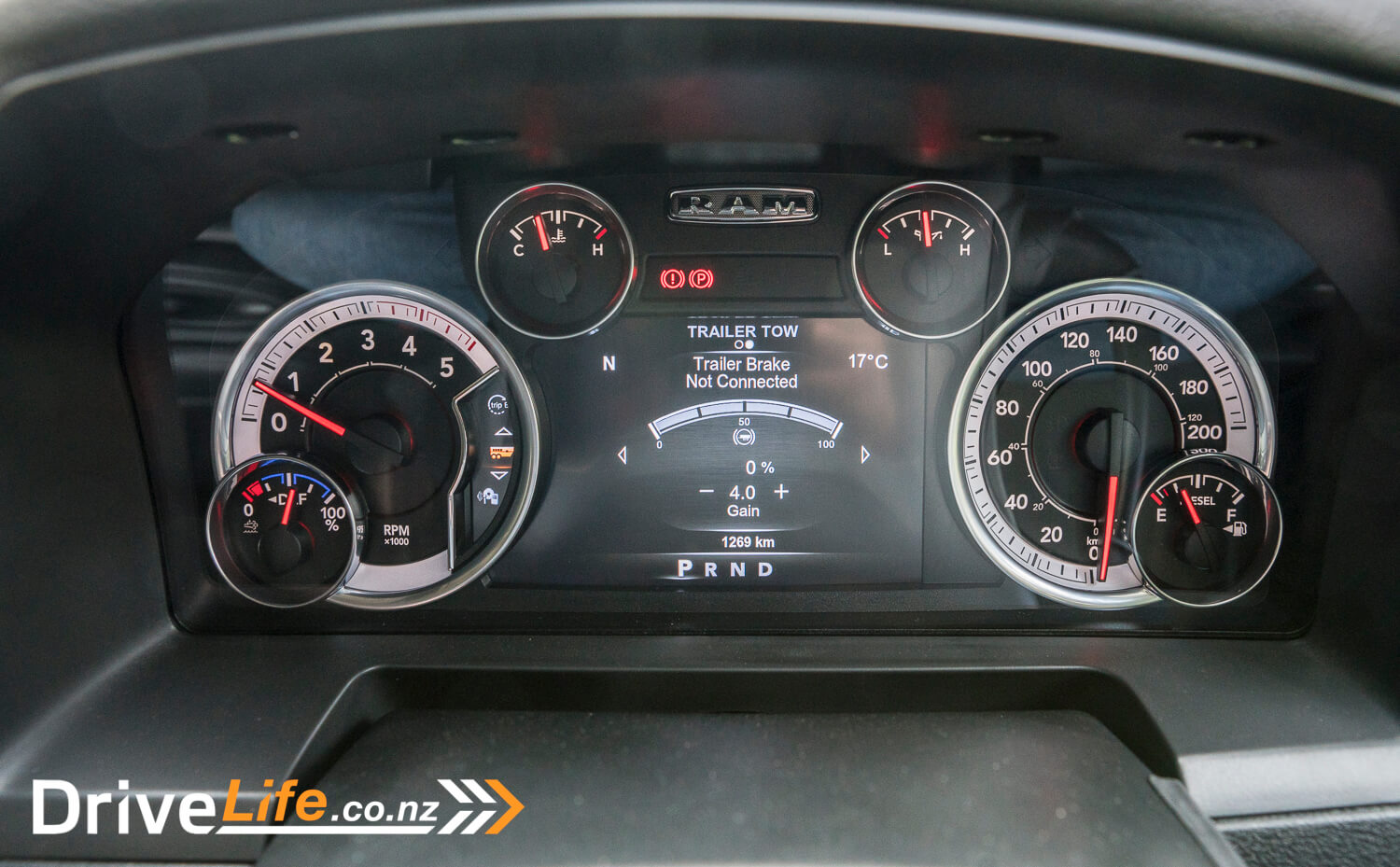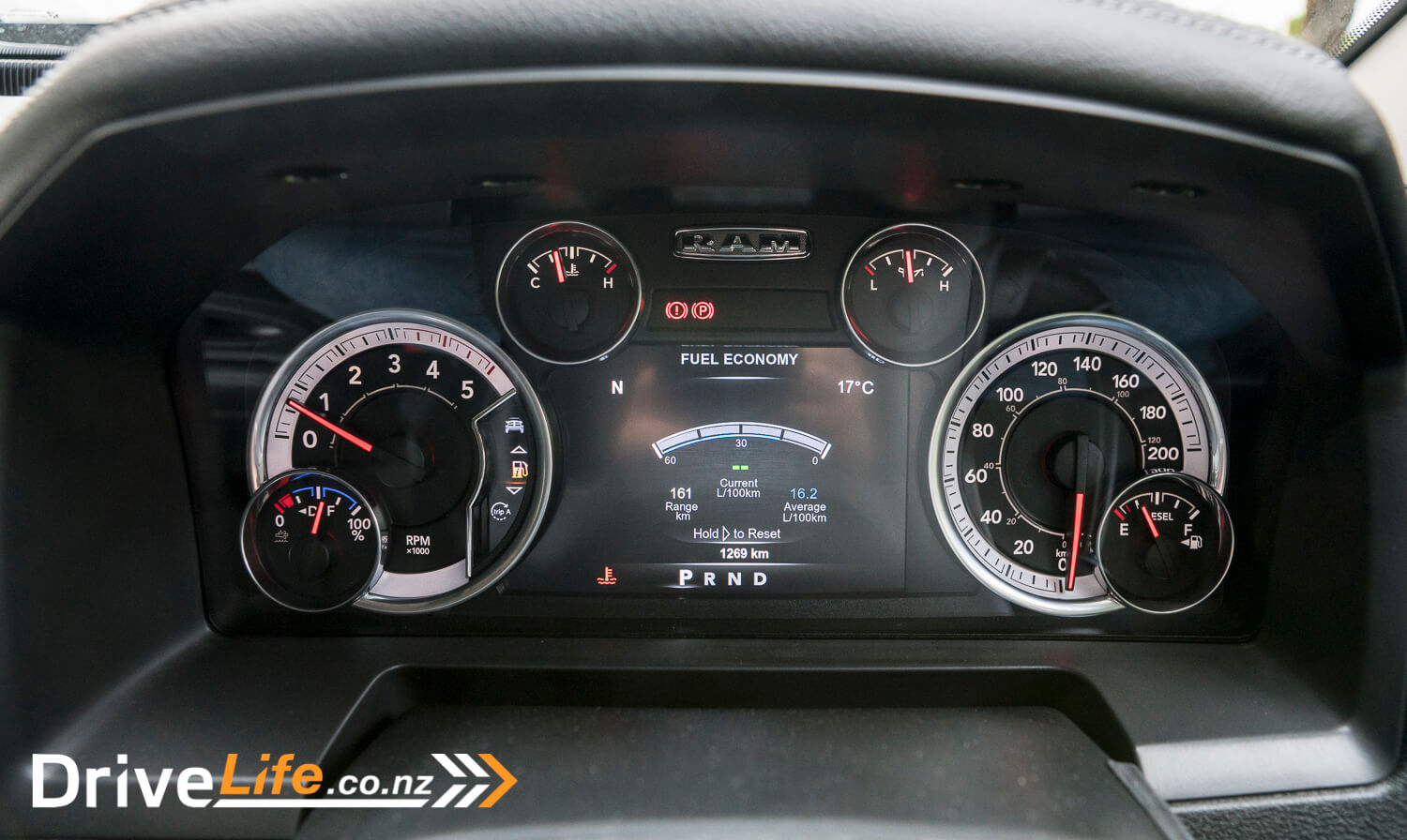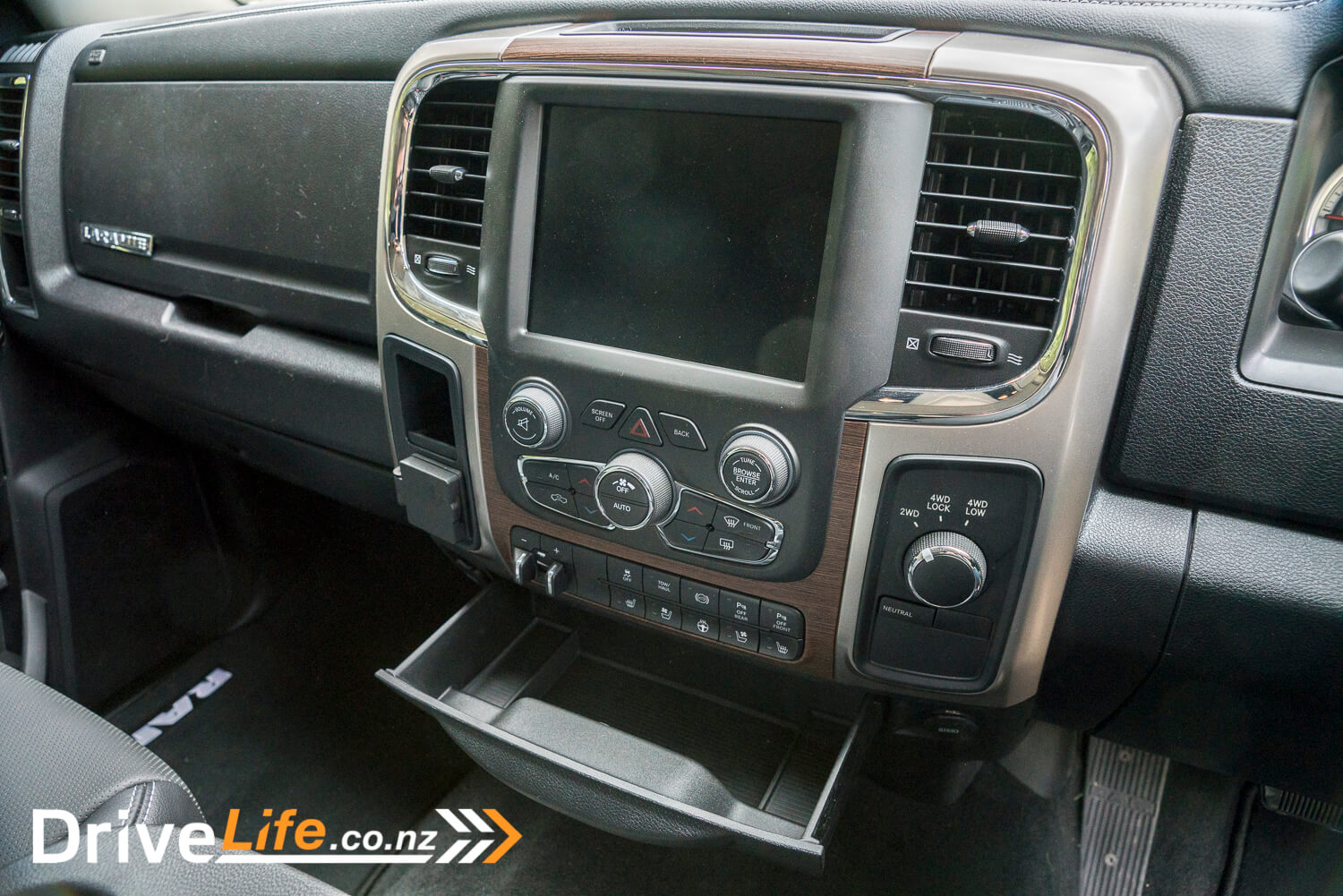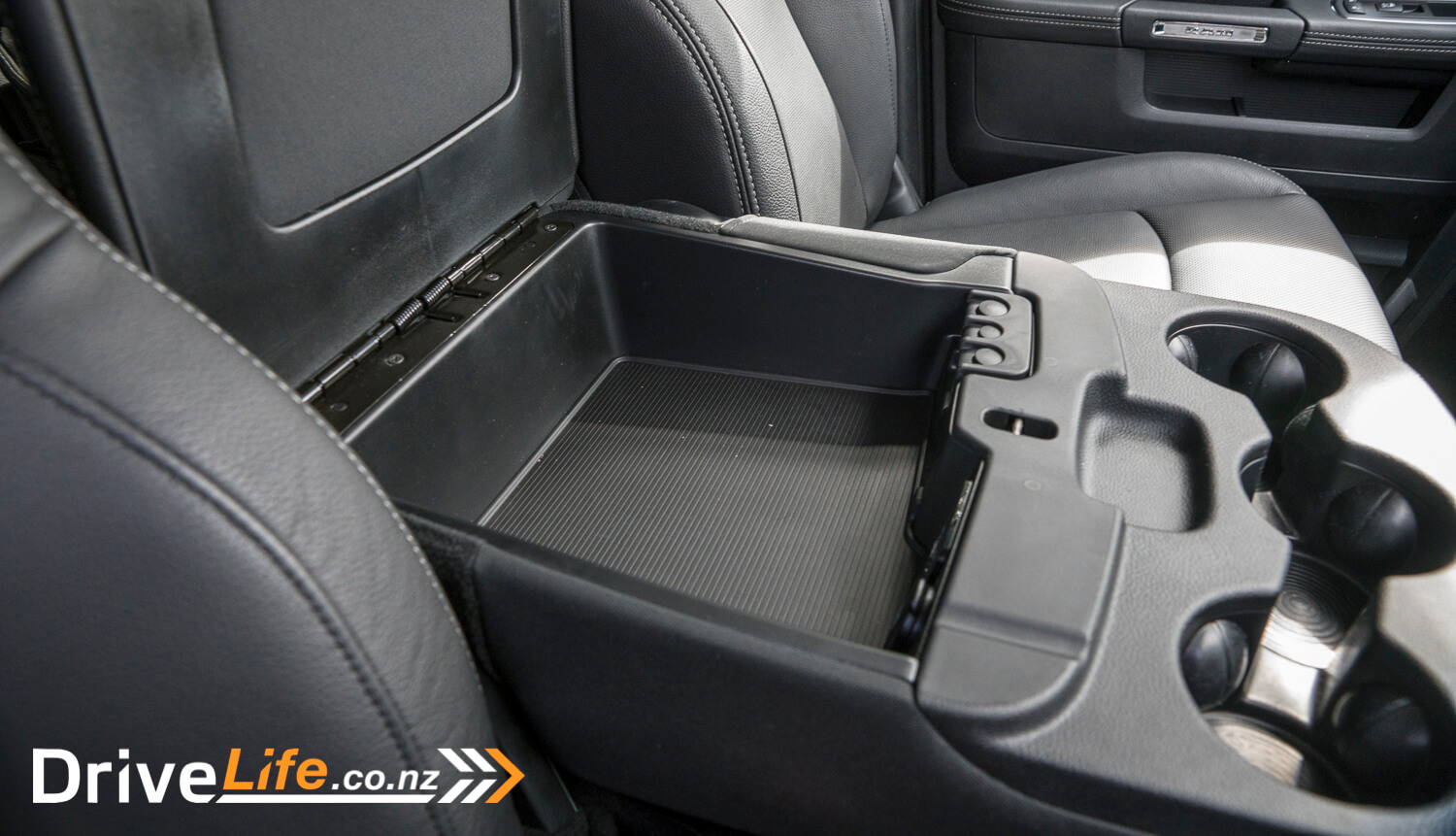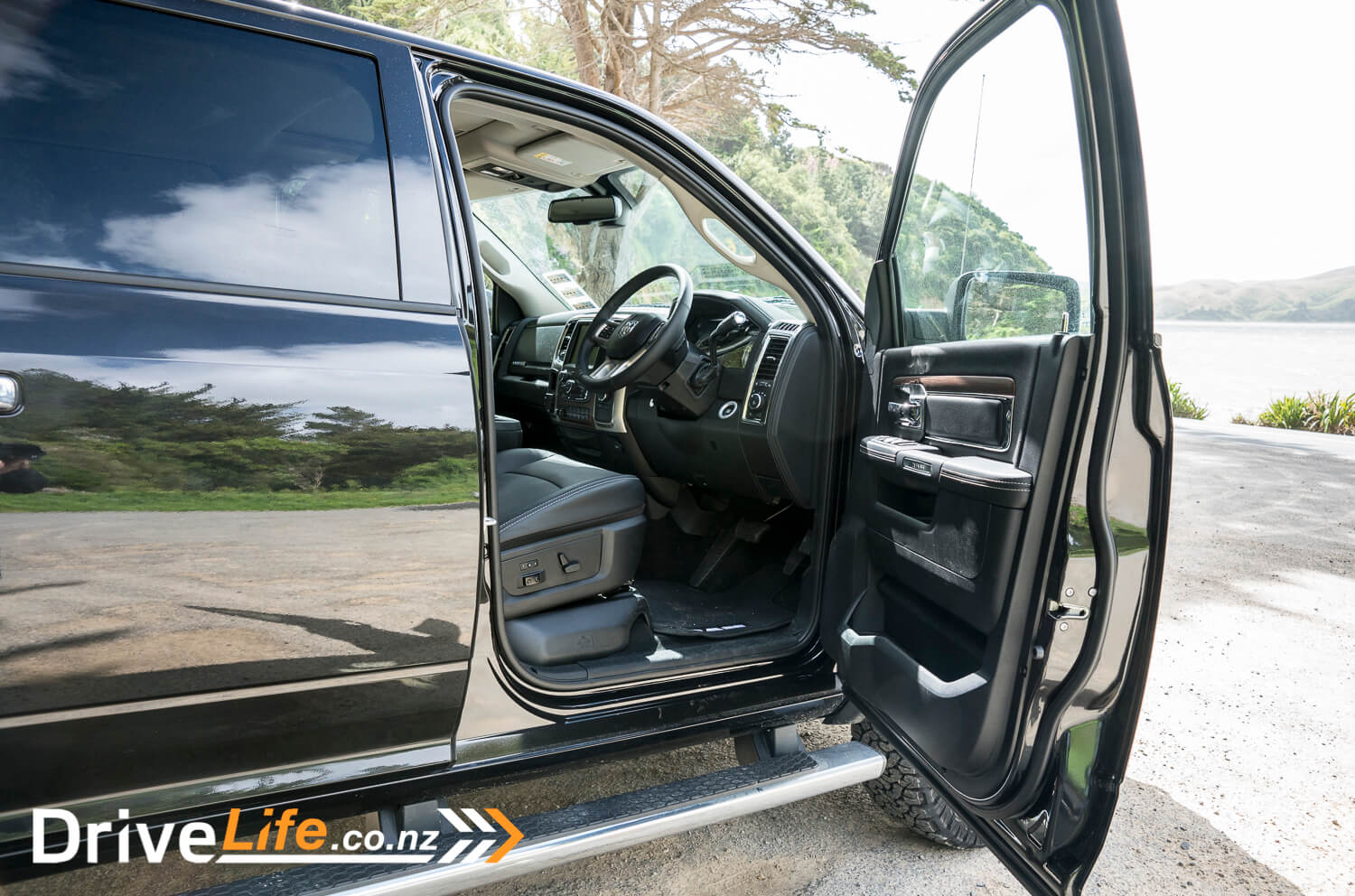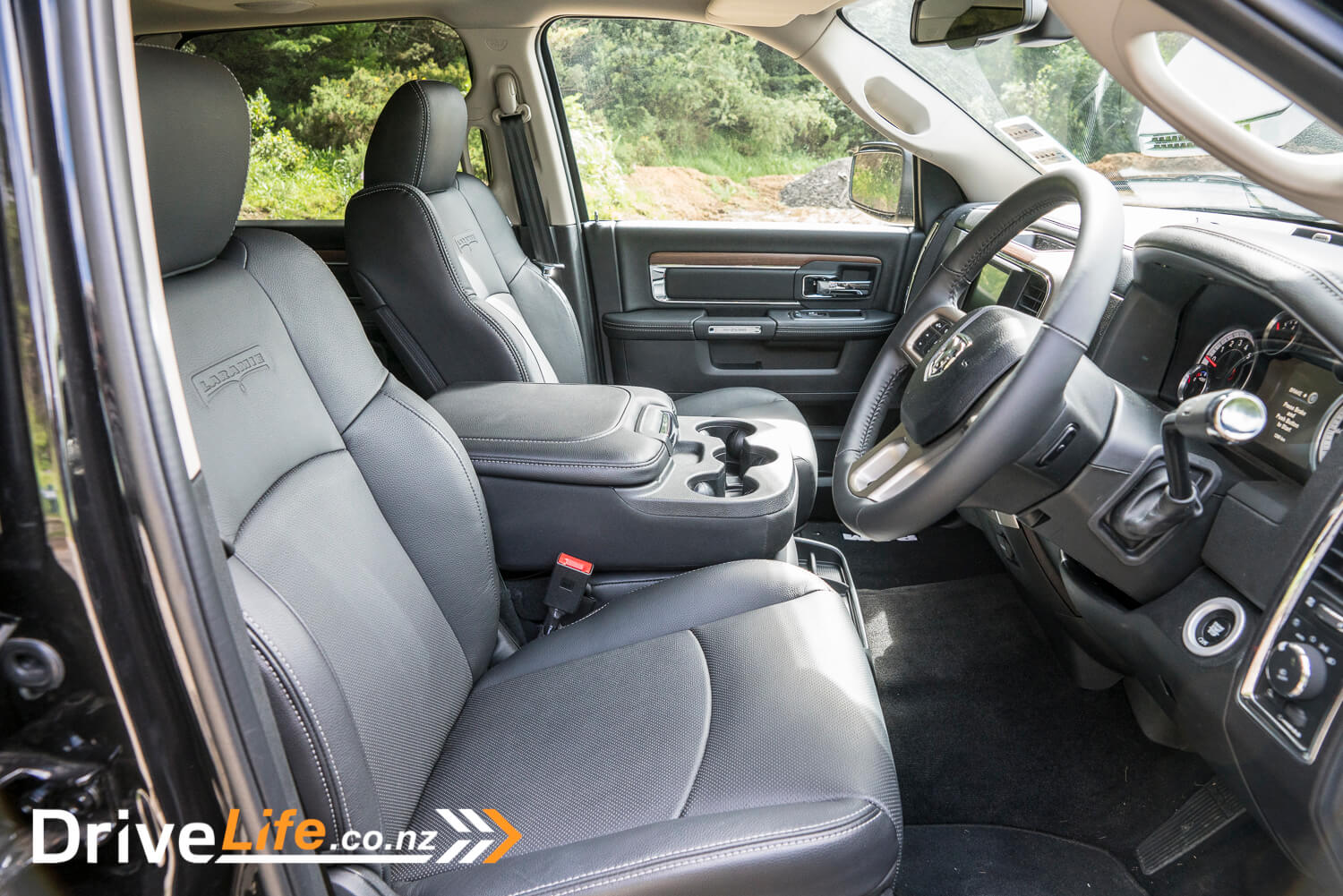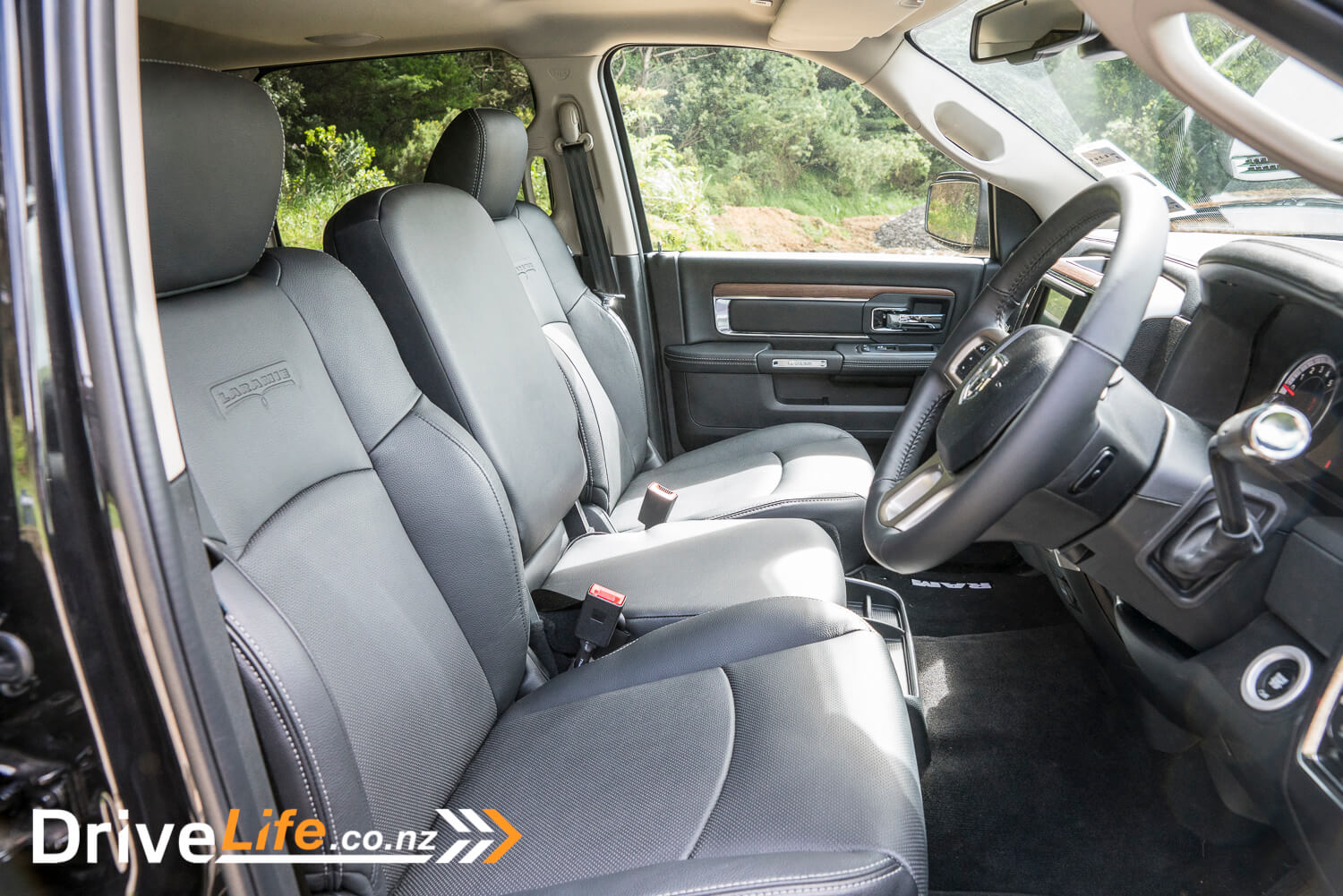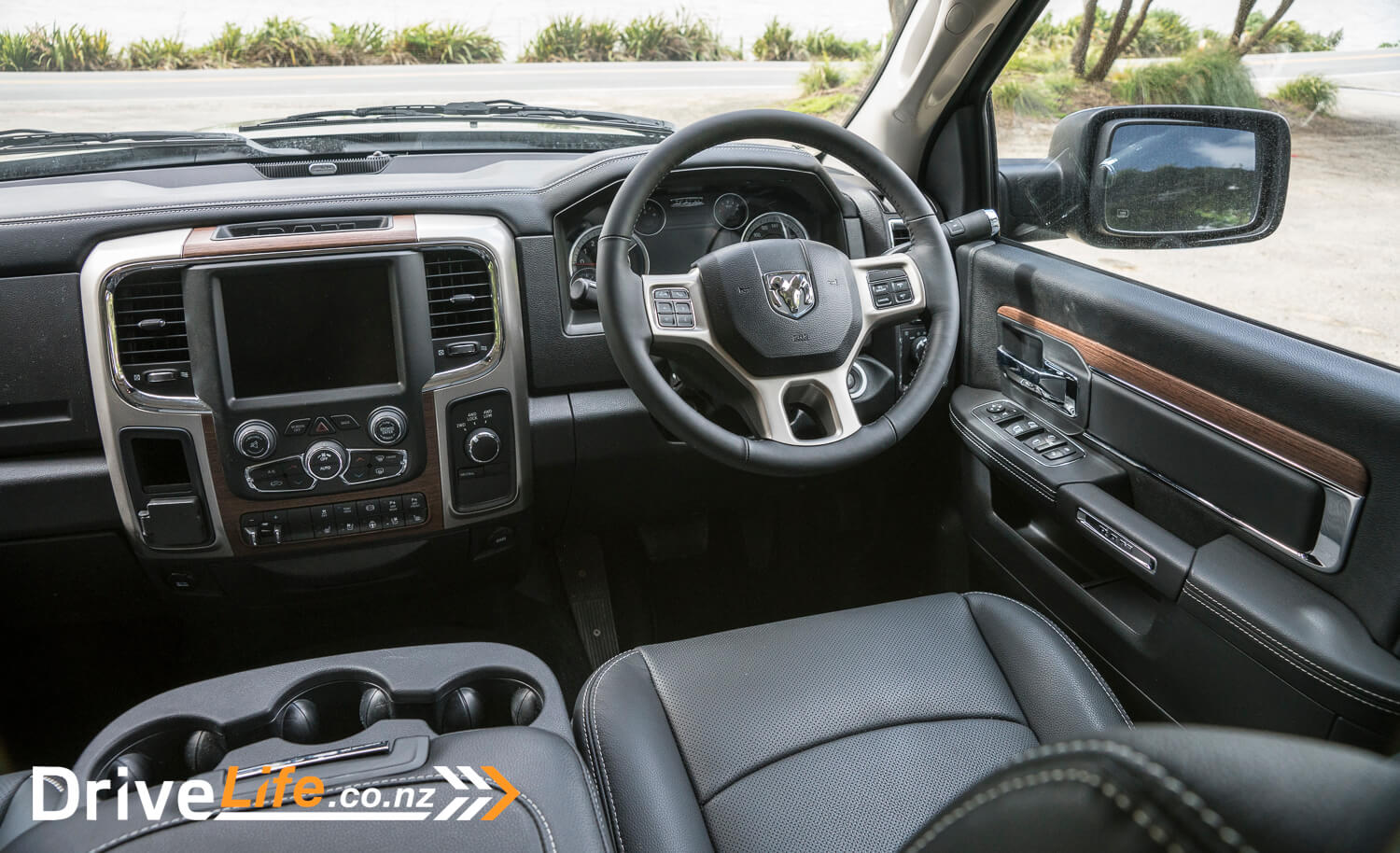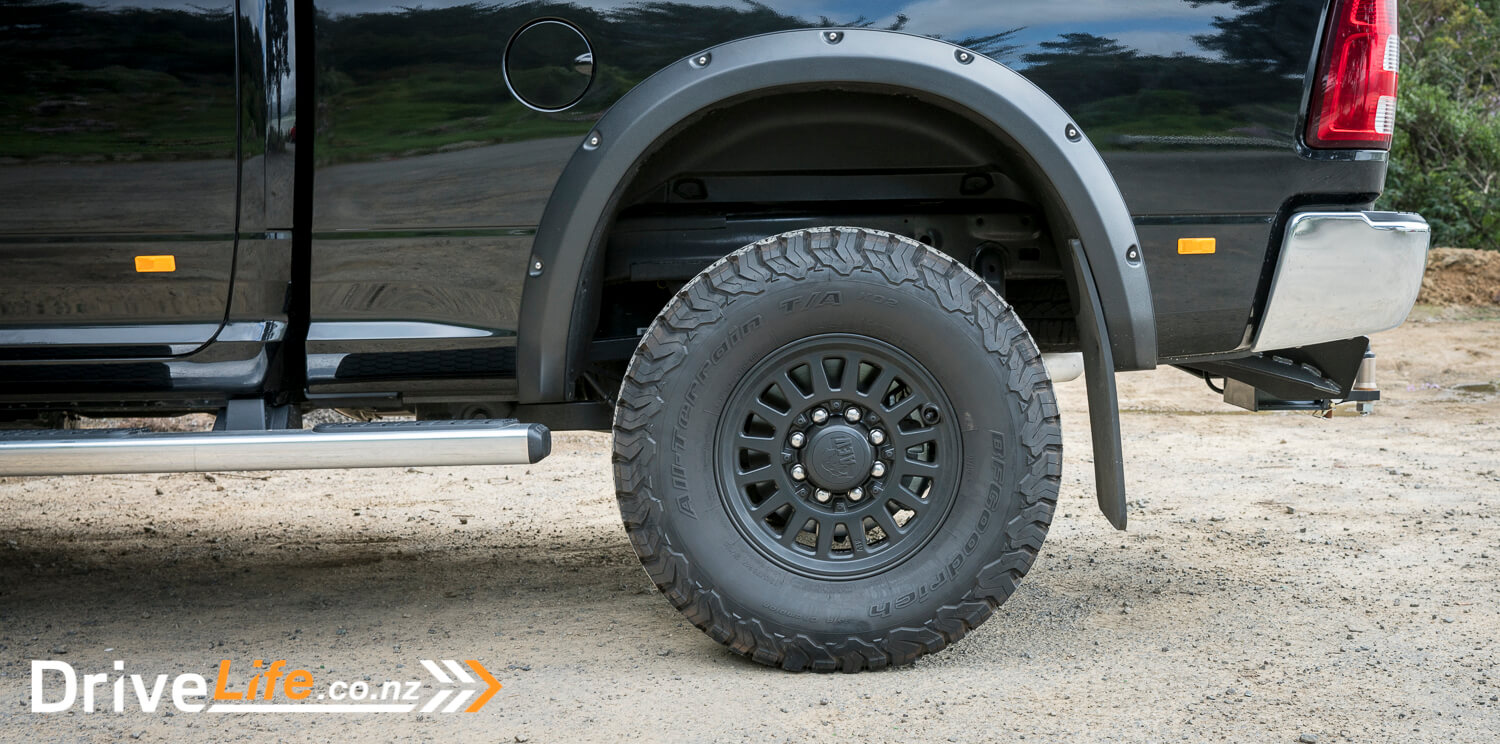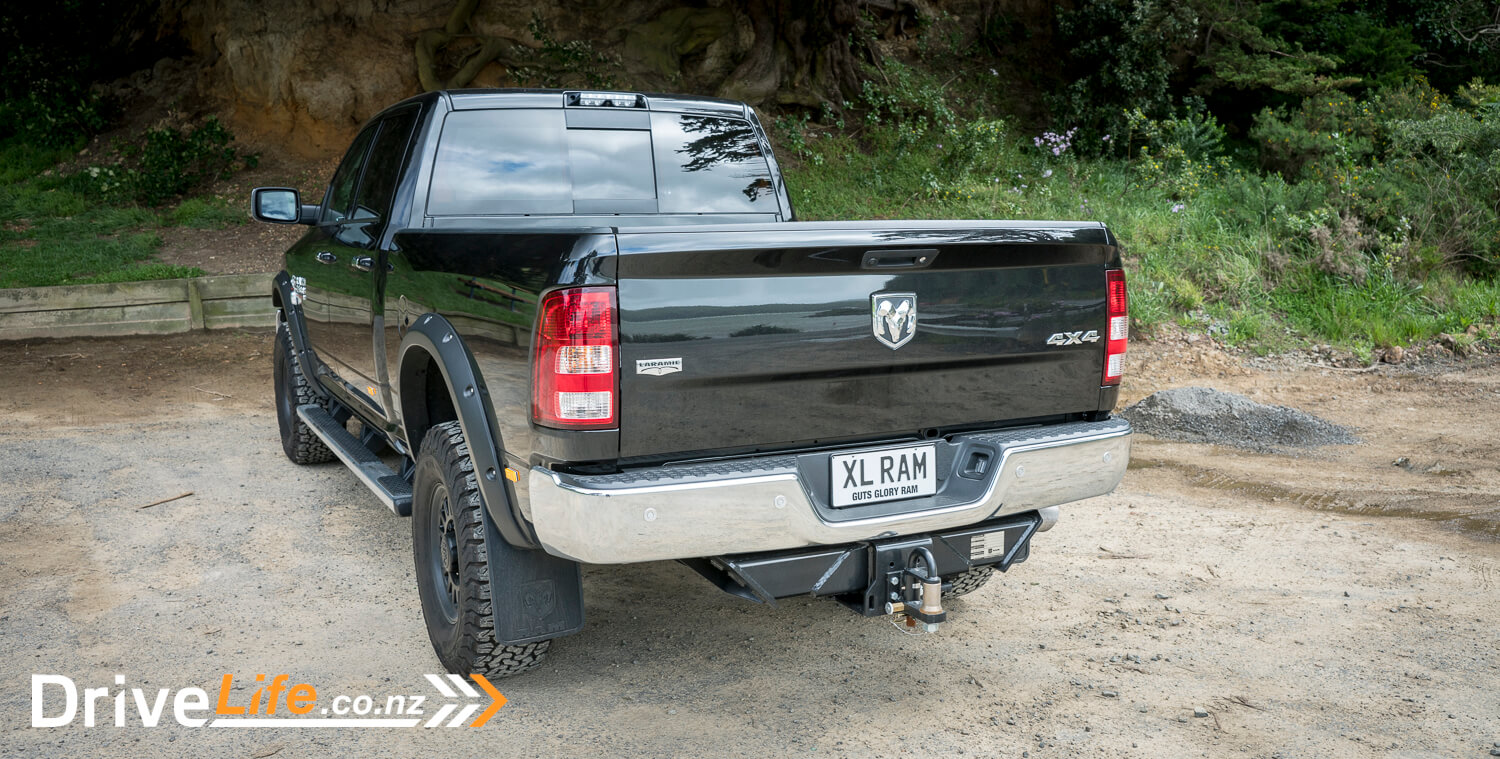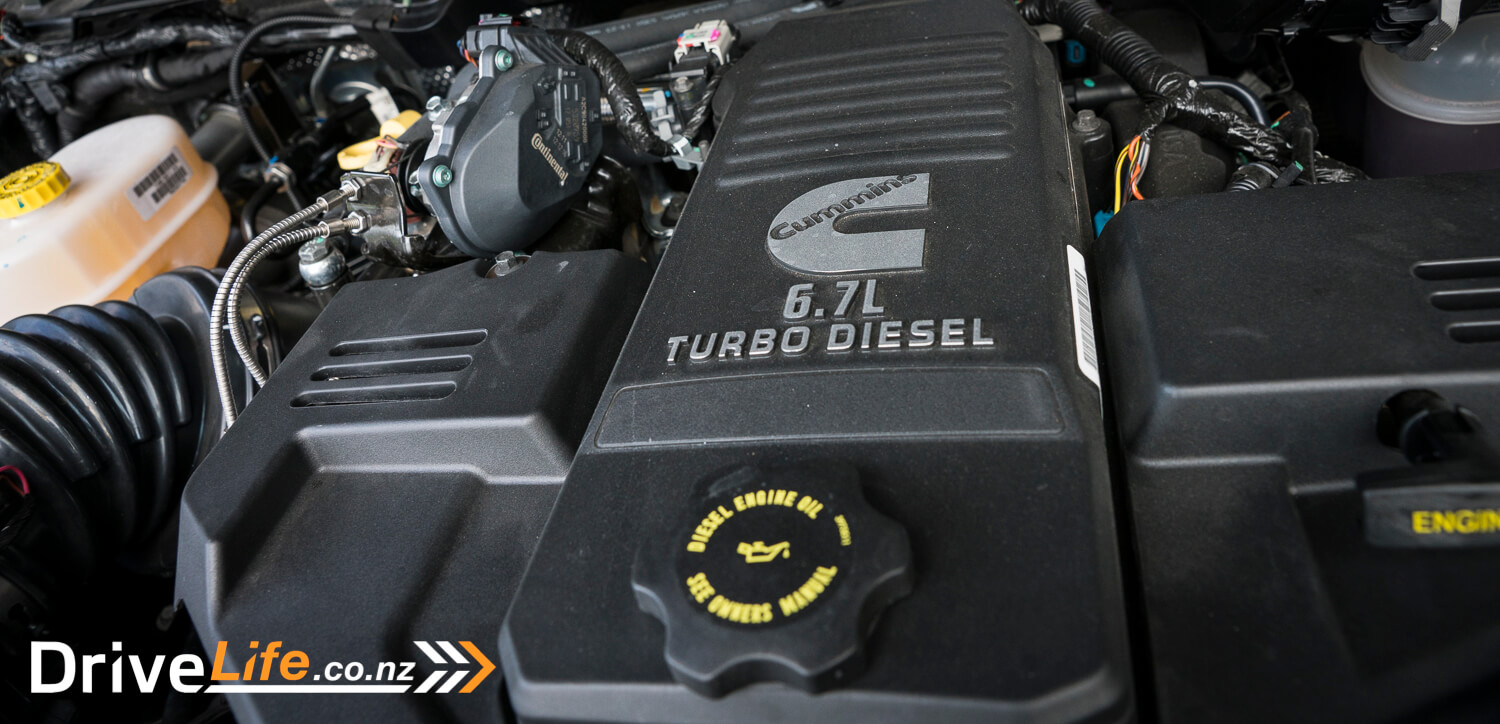To start with, I was not originally destined to test drive the new Ram 2500 XL; it should have been Fred, as he owned an older model. He was pretty gutted that he was not going to be able to review it. And I was gutted as I could be for him, as he would be in the USA, doing his sixth road trip holiday. But I almost forgot he was even gone, as the excitement of testing the Ram overcame me.
The Range
Ram offers two models, the Ram Laramie 2500 and Ram Laramie 3500. If you were to park these two beside each other, most people would have a hard time telling the difference.
Let’s start with the Laramie 2500, which starts at $149,990. Power by a six-cylinder Cummins 6.7L turbo diesel, rated at 276 kW with 1084 Nm of torque. The other spec figures are just as impressive. Max braked towing is 6942 kg and the 2500 has a deck payload limit of 913 kg. The deck payload of the 2500 is lower than the 3500 as due to the three-link coil spring suspension for the rear wheels. Which allows for a higher towing capacity over the 3500.
The Laramie 3500 that starts at $169,500 and is similar, yet different. The 3500 has a slightly lower max braked towing capacity of 6,171kg. But the trade-off for its heavy-duty rear leaf spring suspension is that it offers almost twice the payload weight of 1,713kg.
Apart from the difference in the rear suspension system, both models are pretty much the same. Both have a tough 4×4 BorgWarner BW 44-46 transfer case which offers a long-range reduction ratio of 2.64:1 – an ideal ratio when off road in a slow rock climbing situation or when using your Ram 4×4 on challenging terrain or steep grades.
There is a Class V hitch receiver, which allows the use of a 50mm ball, 70mm ball and a pintle hitch. This is also combined with a dash-mounted electric trailer brake controller. Both have a strong ladder frame chassis which consists of eight separate cross-members, hydroformed frame rails and fully boxed rear rails, which allows both the 2500 and 3500 to tackle the toughest of jobs on any terrain.
First Impressions
I picked the Ram Laramie 2500 up from Gazley on Cambridge Terrace in Wellington. I had dropped my own car off for a service upon Adelaide road and walked down to pick up the Ram. I could see the Ram from the top of Cambridge Terrace, which is around 500m away. All I could see from the top of the street was the entire cab sitting above the roof level of every other vehicle on the street. This vehicle was massive. It seemed to grow bigger and bigger the closer I got to it. But you can’t help but smile and think how cool it is too. This is one massive tough looking truck, and I couldn’t wait to drive it.
The Inside
This was where I struggle with what the manufacturer had advertised. Don’t get me wrong, it was not a bad interior, but it’s not what Ram describes it as. “Few pickups stand out with such sophistication as the Ram Laramie. The luxurious treatments and inviting interiors bring a wealth of appointments, design refinements, comfort and craftsmanship to the Ram”.
Ok, so like I said, it’s not bad; nice leather seats, which were wide and comfy. The only thing that stands out from other pickups, was the fact that someone so tall like myself had to climb up into it. I think this blurb is aimed at the Americans, which usually means it’s got 9 cup holders, which the Ram has for its six seats.
This at the end of the day was still a working truck, and many of the interior appointments reflected that. You can see this in the centre console, mainly by the big plastic cap that covered the 240v NZ plug socket. But luxury was not what you needed here, you need the equipment to be tough, and that it was. There was not much in the way of soft-touch plastics, but everything felt like it would go the distance.
The main dash itself was simple and well designed. With a large 7-inch multi-view cluster screen in the middle. This was great; it made the info you wanted displayed very easy to read when driving. I found myself leaving it on the digital speedo display. Which was displayed as massive numbers, again making it easy to read when focusing on the task of keeping the massive beast on the right part of the road.
Due to the size of this truck, the 8.4-inch touchscreen display felt small. This was made more so by the unit it was mounted in. Surrounded by buttons and air vents, all of which were easy to use and access while driving. But the design of this centre unit lacks the sophistication that was advertised. This U-Connect system had the added Nav system which had not been available in previous Jeep models that share this system. There was no sign of Apple Carplay or Android Auto, however the phone integration was easy and worked as one would expect it.
The rear seats were spaced well, with good room for tall passengers even if there is a tall driver. There are two full-sized seats in the back, and one short-base middle seat, all of which fold up to reveal a flat deck internal loading deck. The deck panels are hidden under the seats, which are easily folded out when the seats are upright. Oddly enough, even when the deck panels are down, there is a hole in the middle, still allowing you to use the two cup holders in the back. Maybe this is that luxury they spoke about.
The rear deck is massive, and somewhat unexpected, as it’s chest height to most people. This could cause some loading and unloading issues, depending on your height. The deck itself was covered in a spray-on tough deck material. This looked great, much better than any of the tough decks that you see in your average utes. It looked like it was installed at the factory and probably was.
The Drive
Driving this beast was actually a lot easier than expected. The challenge was more around not driving over any other cars or landmarks. From the 1st floor of the Ram you have a commanding view, which helped when driving something this size around a confined city like Wellington. But as long as you had a good feel for the size of it, and you keep it on the straight and narrow you will be fine.
I did find that on some narrow streets that it was best to drive down the middle – of course, only when there was no other vehicles coming the other way. You find your focus is on the vehicle and it surroundings, opposed to trying to drive the vehicle itself. As the steering is no different to any other car, light in changing direction, while giving you some good feel to where the wheels are. This was good, as it shows it’s pretty natural to drive, once you get over its size.
On the motorway, it’s pretty much the same. Even more than in the city, as you can use that 1000 Nm of power to propel the Ram up to 100km in 7.5 seconds, which is bloody impressive for something that has a kerb weight of over 3.5 tons. Due to the width of the Laramie, you don’t have to deal with the body roll, that you would expect from a ute, with a higher seating position. The extra weight and stiffer suspension can be thanked for that too. What this meant, is that you can drive it in a very similar fashion to a car – and do so with great confidence.
There were a couple of moments in the wet that I thought I had best put on the 4 wheel drive mode, as up to then I had been driving the Ram in 2 wheel drive, with the power to the rear wheels. And on very wet days, if you push a little to eagerly on the throttle, the back two wheels in 2 wheel drive mode would light up, and kick the back out left or right. It would only be for a second, but it was unexpected and for something so big and long, I found it best to switch to 4 wheel drive in the wet, so that power could be put down safely.
So far so good, what’re the downsides I hear you say? Well, they are obvious ones. Running costs are not going to be cheap for this bad boy. Let’s think for a moment about the 117-litre tank. If we take the current diesel price of $1.34, it will cost you $156.78 to fill the tank. Remembering this is diesel we are talking about, so there are still road user charges on top of all of this. The 117 litres managed to give me an average of 16.5 litres per 100km, which worked out to be around 550km based on my mix of city and motorway driving. I think I might have been able to push this a bit further if I was driving like a saint, but would not expect it to be much over 600km per tank. I checked the manufacturer’s fuel useage rating, and to no one’s surprise, there is no data available online.
To put this in perspective, my own Audi RS6, with a twin turbo V10 engine, gets around 13 litres per 100km, and I can get around 500km from a 70 litre tank of 95 octane petrol – which costs around the same as it does to fill the Ram with diesel. So what does this mean? Well it’s simple really. No one can say they bought this to save money on diesel, you just don’t buy this truck to save money on anything.
I did not get a chance to tow anything with the Ram, but I have no trouble believing that it would do it without much effort. Anything up to 3.5 tons may not even be noticed back there since that’s only half its full towed braked capacity. The advantage of the Cummins engine is that it features exhaust braking, previous owners say that this was very helpful when towing. The only thing that came to mind, was the dash mounted trailer braking control. It seemed to be on the other side of the centre console, almost like it was still set up for left-hand drive. Unsure if this would be an issue or not.
What it’s up against
Nothing, the only competition in New Zealand is its brother the Ram Laramie 3500. Both of these are the only choice for you if you find that regular utes just won’t cut it.
Heavy Duty Utes
| Brand / Model | Engine | Power Kw/Nm | Fuel L/100km Combined | Deck Load Capacity | Max Braked Towing | Price Highest to Lowest |
| Ram Laramie 2500 | 6.7 Litre Cummings turbo diesel | 276kw / 1084 Nm | N/A | 1,713kg | 6,171kg | $169,500 |
| Ram Laramie 2500 | 6.7 Litre Cummings turbo diesel | 276kw / 1084 Nm | N/A | 913kg | 6,942kg | $149,990 |
| Pros | Cons |
|
|
What do we think?
This was a tough review. I was caught between two major issues. What people thought of it, and who would buy it. The who would buy it, was simple enough. This broke down into two sub-categories, one for the people with a need to tow something over 3 tons, or tow a fifth wheel trailer or caravan. And two for those who just want it, for the same reason you want a supercar, because you can afford it and you have always wanted one.
So where does this leave us. After the week of driving it around Wellington. I came to really love this truck. But not for all the right reasons, more for the feelings it gave me when driving it. Just like a supercar, it makes you feel like a big child. It brings a silly grin to your face each and every time you drive it. And you can’t help to giggle when you look at how cool and big it is when compared to everything around it.
As I don’t have the need to tow the Inter-Islander anywhere or have a fifth wheel trailer or caravan I really can’t justify buying something like this. But that’s not to say that I wouldn’t if I won the lotto. But for those who do have a need, I would suggest you take some time to think about how you would live with something of this size in New Zealand on the day today.
Rating – Chevron rating 4 out of 5 (But only if you need it)
2017 Ram Laramie 2500
| Vehicle Type | Large 4WD Heavy Duty Ute |
| Starting Price | $149,990 |
| Tested Price | $149,990 |
| Engine | 6.7L Cummins Turbo Diesel engine |
| Transmission | 68RFE six-speed automatic transmission |
| Kerb Weight | 3577 kg |
| Length x Width x Height | 6027 x 2009 x 1974 mm |
| Cargo Capacity | 913 kg max deck load |
| Fuel Tank | 117 litres |
| Fuel Efficiency | Advertised Spec – Combined – N/A L / 100km
Real World Test – Combined – 16.5 L / 100km |
| Warranty | 3 year or 100,000 km & 24/7 Roadside Assist for the term of the warranty |
| ANCAP Safety Ratings | N/A |


